 Effects of Radio Frequency Water Treatment on Revival of Wilted Flowers
Effects of Radio Frequency Water Treatment on Revival of Wilted Flowers
Andrew Holster
ATASA Research, New Zealand
Correspondence Email: ATASA030@gmail.com
Correspondence Address: 93 Omaru Rd., RD3, Te Kuiti, New Zealand.
Keywords: RF water treatment, EM water treatment, exclusion zone water, EZ water, Vi Aqua, flower wilting, magnetic water memory
Draft 3. 31 Oct 2015, Te Kuiti, New Zealand.
Received February 8, 2015; Revised October 18, 2015; Accepted November 28, 2016; Published March 16, 2017; Available Online March 17, 2017
Abstract
An experiment to detect an effect of radio frequency (RF) radiation (27.5 MHz) on properties of water through its effects on the revival of wilted catsear dandelions was performed. The RF treatment was applied using a commercial product, the “Vi~Aqua PlantMate.” Around 1,500 pairs of stems were tested in the experiment. There is a long-standing controversy over whether RF treatment has any long-lasting effects on properties of water. Effects were found when treated water contained significant impurities, and when the RF treatment was applied to the flower stems while immersed in the treated water. The positive results indicate that the RF treatment significantly affects water transport within the plant. It is inferred that it enhances osmosis into cells and capillary transport through the plant’s vascular system. The effects began to show after about 20 minutes, and efficacy of the water treatment lasted for a period of at least several hours. The primary aim was to verify the phenomena. The challenge to explain the phenomena is briefly addressed in discussion. Pollack’s (2013) EZ (Exclusion Zone) theory is suggested as the primary framework for an explanation. It is suggested that the RF treatment does not provide the energy responsible, but catalyzes absorption of free IR (Infrared) or MW (Microwave) radiation by the water, and this energy is stored as electrical energy through the creation of EZ structures.
Introduction
A number of investigators, from the late 1980s onwards, have found radio frequency (RF) electromagnetic treatment of water can have significant effects on its properties. A number of commercial devices have also been designed to apply RF radiation to water, with claims of beneficial effects on growth and health for plants, reduction of lime-scale formation, and other effects. But while RF water treatment has been researched and commercialised for over twenty years now (Morse, 1997),2 there is still little scientific consensus about whether it works, or how it works. Some scientists have supported the concept,3 but others claim such effects are impossible, and debunkers commonly dismiss these products as a fraud4.
This paper reports on a series of experi-ments conducted specifically to test whether RF water treatment can be observed to affect properties of water through a direct effect on water transport within a plant. The method was to compare the effects of RF treated water against untreated water on the revival of wilted catsear dandelions (Hypochoeris radicata). Revival requires water transport up the stem, and turgor pressure to build within cells, to return rigidity to the wilted stems. This is principally dependant on osmosis into cells, and capillary processes in the vascular system.
The RF treatment was applied using a product called the “Vi~Aqua PlantMate”** (Web Ref 1). It applies an EM radio wave of approximately 27.5 MH into a body of water through an immersed antenna. This device was chosen for convenience, and equivalent products are available (e.g. Web Ref 3). This is referred to as “VA treatment,” which may be considered to refer to any generic RF treatment of this kind. Scientific interest here lies in whether this kind of EM treatment can affect properties of water at all, not in testing product claims.
I note that scientific debunkers commonly attack this product technology as a fraud (Web Refs 9-12), and there is a sceptical tradition in the field that claims it is impossible for RF treatment to have significant effects, or for water to retain properties. However, my review of the literature found no positive scientific evidence against claimed treatment effects, and to the contrary, substantial evidence indicating real effects in a variety of contexts. The only realistic criticism I have found states that “manufacturers fail to offer scientific evidence for product performance”. But in fact there have been numerous published experiments and field trials over the past twenty years. They range from micro-physical studies showing distinct effects on electromagnetic properties of water (See (Leahy et alia, 2000); for more extensive references, (Chibowski and Holysz, 1995); (Colic, M. and Morse, 1998); (Higashitani and Oshitani, 1998)), and on organic systems (Cosgrove, 1993), (Ellingsrud and Johnsson, 1993), (Krizaj and Valencic, 1989), (McQueen and Cosgrove, 1994)), to macro-physical studies of effects on plant growth, including some controlled scientific experiments (O’Kiely and O’Riordan, 1998), as well as field trials (Web Refs 6, 7), and expert testimonials (Web Ref 18). A former professor at the University of Limerick and pioneer and promoter of the VA technology, has various essays on the subject (Darragh, 2009). In terms of generic theoretical claims that water cannot support complex structures or processes required for any such effects, recent studies show that water is far more complex than traditionally thought. This is illustrated by the remarkable images in (Ho, 2014), by new detailed observation and analysis showing quantum structure for the first time (De Ninno et alia, 2014), and by the broad new paradigm of water structure presented in (Pollack, 2013). I return to this below and in discussion.
The present experiment falls between experiments in physical chemistry that show effects of RF radiation on micro-physical properties of water, and biological studies showing effects on plant growth or metabolic processes. It investigates a simpler effect relevant to both viz. water transport in a plant. It is conceptually simple, and seeks to confirm direct effects of the water treatment though a simple, macroscopic organic system, occurring on the time scale of an hour. The experiment can be easily reproduced without complex equipment. Many of the previous studies support the plausibility of the effects found here. RF treatment has been repeatedly confirmed to alter EM properties of water, and to affect growth in plants, although it is not the purpose to review this literature here. However, there appears to be no adequate explanation of effects, and little scientific consensus after two decades of controversy.
I note two important difficulties in ex-plaining the effects. One is that water is thought to be too chaotic to retain significant structure for more than fractions of a second – the relaxation time for electrically-induced structures at a molecular level is assumed to be very short. Another is that the RF radiation used has very low energy. The wave-length of the light used is about 10 meters, with a frequency of about 27.5 MHz. The quanta of energy of individual photons (E = hf) is very small compared to energies in chemical bonds, heat energy (i.e. atomic kinetic energy reflecting temperature), or in microwave, infra red or visible light (see Supplement 3). The energy of visible light is about 100 million times the RF energy. Hence scepticism that RF radiation could alter properties of water is natural.
However, research demonstrates real phenomenon in various contexts. Research into the magnetic memory of water (Colic and Morse, 1998; Leahy, 2000) led directly to the technology application itself (Morse Patent 1997).
“The magnetic water memory effect is probably one of the most challenging problems of modern physical chemistry. It is well known to many engineers that water treated with magnetic or electromagnetic fields retains the modified properties for hours or days. Such modified water is used to reduce scale deposition onto metallic surfaces, enhance cement hydration, or enhance the growth rate of plants and animals. The existence of the magnetic memory of water was a rather anecdotal phenomenon until recently when the members of several laboratories reported sophisticated physico-chemical measurements which quantified this exciting process.” Colic and Morse (1998), p. 265.
Early investigators, such as (Chibowski and Holysz, 1995), (Higashitani and Oshitani, 1998), (Colic and Morse, 1998), (Leahy et alia, 2000), discovered surprising micro-physical features of the RF treatment (e.g. altering zeta potentials) published in a cluster of scientific papers, mainly in the 1990s. But this research seems to have failed to gain general acceptance. A separate tradition is represented by (Pollack 2013), who proposes a theory of “EZ water” unifying a century-old “alternative” tradition of water research. Of central relevance here, the effects of charge separation induced by infrared EM radiation plays a central role, and is claimed to underlie processes of osmosis and capillary action. Pollack does not attempt to explain RF water treatment, but I argue in Discussion that his theory is the necessary framework for an explanation. The primary aim here however is to directly address the question: Does the radio frequency EM treatment have an effect on properties of water, lasting a significant period, and significantly affecting water transport in plants?
Method and Procedure
The effects of various treatments were compared through the times taken for samples of wilted catsear dandelion (Hypochoeris radicata) to revive.5 Samples of around 180-200 straight stems with healthy flowers were normally collected at a time, and allowed to wilt for varying periods ranging from about three hours to two days. Paired sub-samples, subject to two different treatments, were then revived by immersion of stems in buckets of water, and revival times recorded. Stems were individually paired according to similarity in appearance, size and degree of wilting.
Each comparison of two stems is referred to as a single trial. In each individual trial, the two stems were subject to two alternative treatments. A single experiment is a set of trials performed simultaneously, with a common pair of treatments, using a common source of stems. Such single experiments were conducted on up to 37 pairs of stems at a time, using five pairs of stem-holders. Two such experiments could normally be conducted in a day. This uses the full range of stems in the picked sample, excluding around 20% of stems that were damaged or failed to wilt. These combined samples represent a range of wilting periods.
Around 1,500 trials were conducted in the series of experiments reported here. Generally 74 trials could be done each day, in two samples of 37, taken from a single sample of 180-200 stems picked in the morning. There were variations, e.g. to test effects of longer wilting periods (up to 2 days between picking and revival). Effect sizes for stronger effects mean that a daily experiment of about this size already shows evidence of patterns with moderate statistical significance. Repetitions of such daily experiments were combined to achieve statistical confidence and replication.
Treatments were always compared pair-wise. There is no effective concept of an average time for revival relative to a given treatment, since revival times depend on wilting period and severity, stem sizes, temperature, etc, which are not practically controllable. This means that all treatment comparisons are mutually independent, i.e. data from one comparison is not reused in another comparison.
Stems were wilted until they drooped to an angle of 100-180 degrees and became rubbery. They were wilted vertically in boards with small holes drilled to hold them loosely upright. They were revived in special holders, placed over buckets of water, with treated samples (A) in one set of buckets, and untreated (or alternatively treated) samples (B) in the second set. Time was recorded when they reached horizontal. Further details to replicate the measurement procedure are given in Appendix.
Factors
Effects were dependant on primary factors as follows.
Type of water. Four water preparations were used in the main experiments.
(i) RAIN Water (Te Kuiti cottage supply for household)
(ii) BORE Water (Te Kuiti farm supply for household and animals)
(iii) BORE + GRIT Water (Te Kuiti bore water with 50 mls of grit added to 9 litres of water)6
(iv) RAIN + SALT Water (Te Kuiti rain water with 50 mls of rock salt added to 9 litres of water)
The rain water and bore water were both good quality drinking water, and appeared equivalent in effects. Two other water sources were used in preliminary experiments:
(v) TAKAKA Water (Takaka household water)
(vi) HUTT Water (Lower Hutt household water)
VA treatment target. “VA” means application of radio frequency of approx. 27.5 MH for a period of 30 seconds, using the “Vi~Aqua Plant Mate.” The target of the application of the VA treatment is critical. Three main VA treatments were used, along with no treatment.
(i) VA Water only: VA treatment of (a bucket of) water, into which stems are subsequently immersed for revival.
(ii) VA Stems only: VA treatment of water with stems immersed, the stems then transferred to untreated water for revival.
(iii) VA Both: VA treatment of water in which stems are immersed and left for revival.
(iv) VA None: no VA treatment: untreated stems revived in untreated water.
These treatment variations help isolate whether the effect is transmitted through the water alone, through an effect on the stems alone, or through both in conjunction. E.g. if effects had been evident with VA treatment of stems alone, but not with VA treatment of water alone, one might infer that the effect is not carried through the water, but instead through the plant.
These two factors define treatment types. Combinations are notated as follows.

Table 1. List of Experimental Treatments, defined by Water Type and VA Target Type.
Stem-trimming. In all the main experiments, stems were trimmed by at least 2 cm, to a uniform length of 9.5 cm (from the “hook,” where the stem bends), immediately before immersion. Trimming was not a subject of investigation in itself, apart from one short experiment showing the effect of trimming on untreated samples. Stem-trimming is well known to speed the revival of wilted flowers. This effect is often attributed to the removal of air bubbles formed in the end of the stem, which are thought to slow capillary transport, e.g. (Elgimabi and Ahmed, 2009).
Wilting period and wilting severity. Variations in wilting are important, but form part of the definition of samples, not treatments. Individual stems wilt at different rates, may be wilted for different periods of time, and subsequently revive in different periods of time. These can be referred to as individual wilting rate, wilting period, and revival time. These variables are statistically related, through a construct called wilting severity. The more severe the stage of wilting, the longer the revival time. Fast-wilting stems reach more advanced stages of wilting severity in shorter times. Revival time is primarily sensitive to wilting severity. Stems that wilt slowest usually revive fastest.
The range of wilting severity was controlled by using the first 148 wilted stems, from the complete picked batches of 180-200. The first 74 (37 pairs), of rapid wilters, was selected for the first batch of trials, generally taking about 4-6 hours to wilt, then the next 74 for the second batch of trials about 3-5 hours later. Around 30 stems will not wilt suitably, or be damaged, or not have suitable pairs, and 180-200 is enough to select 148 good pairs of suitably wilted stems. This means the samples are primarily defined by the picked sample, and about 80% were used from each picked sample.
Other Environmental Factors. Other factors that could vary between experiments, but not between treatment groups within experiments, include temperature and sunlight during wilting and revival, and rainfall prior to picking the flowers. The range of these factors was minimised. Experiments were done on fine days, in ambient light, in the New Zealand summer, with water temperatures between 18-26 C. Experimental variations were not undertaken to test these systematically. These factors may have minor effects, but there was no indication that the variations allowed were significant in differentiating treatment effects.
Stem Condition Factors. Other factors that vary between individual stems within a single experiment include stem diameter, condition, and the growth-stage of individual flowers. These are important sources of individual variation: e.g., larger stems usually revive better, and stems with flower heads in better condition (less dehydrated, more colour in the flowers) usually revive better. Stems were revived in matched pairs to control for this natural variation. This pairing reduces measurement error compared to taking two simple random selections from the picked sample. Individual variation was reduced by selecting long straight medium-sized stems in the picked sample.
To facilitate replication, I describe the procedure in greater detail in Appendix 1. My main recommendation for future replication would be to record the revival process using time-lapse video, taking revival times from playback. This would improve reliability and save substantial observation time. It would also allow the full sample of revival times to be recorded (so that the tails of the distributions are not discarded).
Data and Analysis
Data was recorded on the following variables.
Primary factors:
- Water Type
- VA Treatment
- Stem Trimming
Time measurements:
- Date-time stems were cut
- Date-time stems were immersed
- Date-time stems had recovered to horizontal
Classification:
- Stem-holder colour-code
- Stem sequence number in holder
Other Environmental Factors:7
- Air and water temperature
- General weather conditions
- Lighting conditions
Data was reData was recorded on record sheets and transcribed to a spreadsheet. When data was occasionally written in the wrong cells in sheets it was obvious as the experiment proceeded, and all transcription mistakes were able to be corrected.
Analysis of statistical significance was done first using unpaired two-tailed homoscedastic t-tests, using accumulated data from multiple trials, with tails removed. To check the accuracy of the t-test, a program was written to directly estimate likelihood of results occurring by chance, by simulating 2,000-4,000 random combinations of data samples. This empirical estimate of significance was usually about 10% weaker than the t-test, showing the t-test is a good estimate.
Effect sizes (Cohens D) and normalised average effects are reported. Histograms of ordered recovery time data provide the best visual presentation of the effects. P-values on one-tailed t-tests are shown in the initial summary, Table 2. Two-tailed tests are given in the more detailed analysis tables.
Tails occurred because some stems fail to recover at all, or fail to recover in a reasonable time, and are abandoned. This depends on the degree of wilting and other conditions. Almost all moderately wilted stems in ordinary water recover (90%) within 100 minutes or so, and most trials were stopped after about 120-180 minutes.
More generally, trials were usually stopped when only a few stems remained (<10%) and showed no further immediate signs of recovery. These represent outliers and stopping the experiment at this point is a practical method of excluding outliers. Almost all stems will recover given enough time, but some take 3-6 hours. A few will not recover at all. Some trials were followed for 12 hours to examine outliers.
The frequency distributions are heterogenous, and show overlaid cyclic modes. The distributions made by combining multiple experiments are not very Gaussian, being a much flatter heterogenous assemblage, with one large mode and subsequent smaller modes. The t-test is not strictly valid since the distributions are not very normal, but it proves quite robust in practise, shown by good agreement with the empirical significance tests. The latter are theoretically more accurate, but as the t-test is simple and widely used, the t-test p-values are given, and represent a consistency check against the empirical method.
Experiments
Initial trials (at Takaka and Lower Hutt, November-December 2014) were used to develop the method and test for effects. The main experiments reported here were conducted in December 2014-January 2015 at the Thompson farm, Te Kuiti. Twelve main treatment variations were tested.
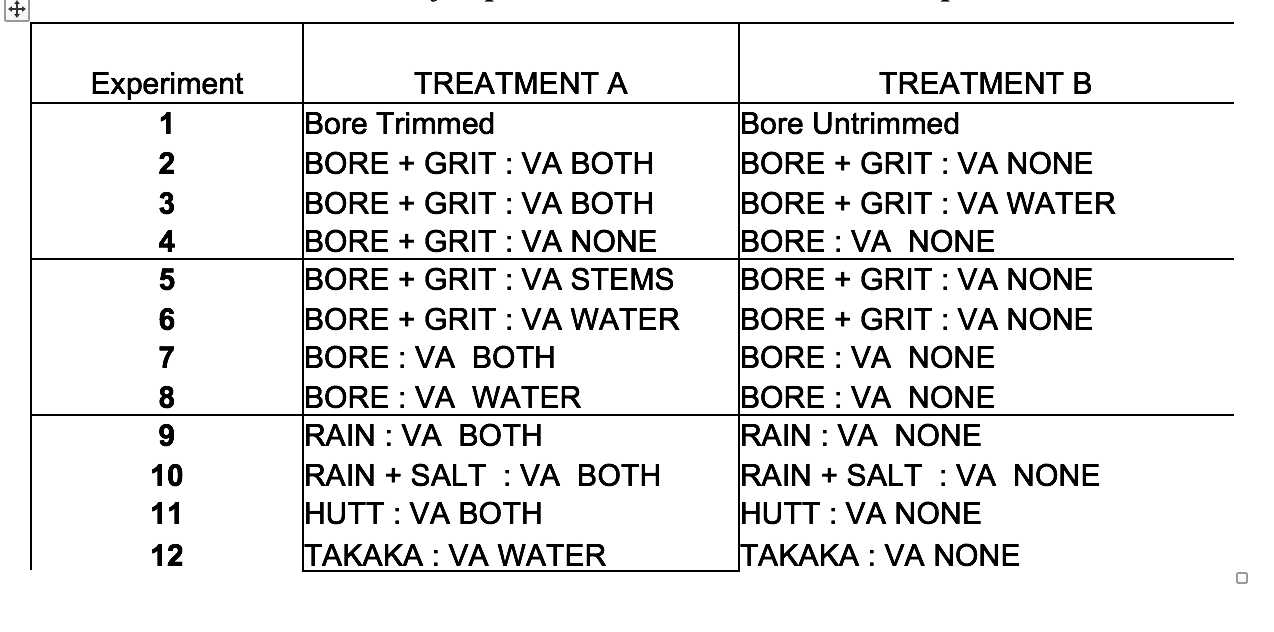
Table 2. List of experiments, with treatments compared.
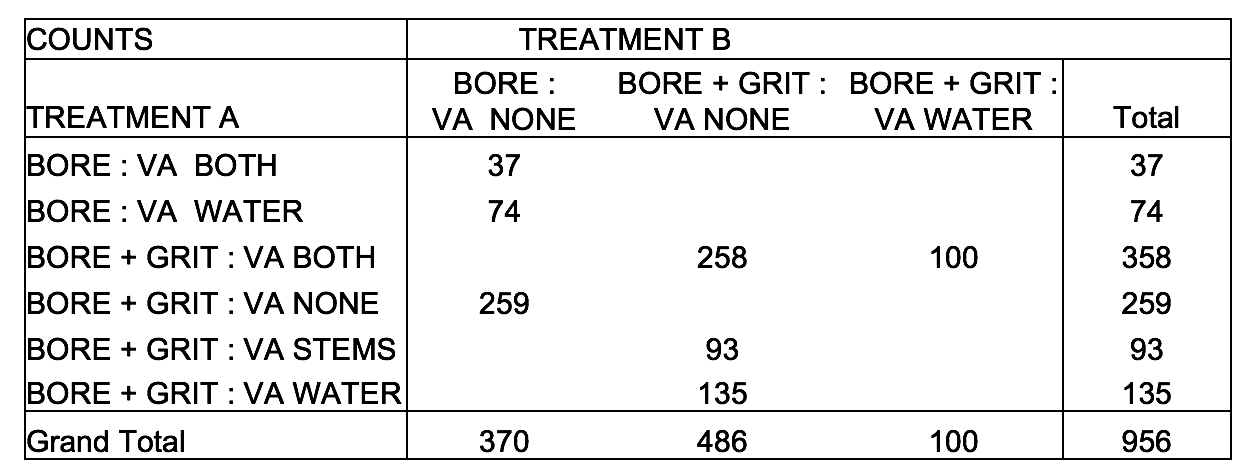
Table 3. Main Experiment Trial Counts: BORE and BORE + GRIT, Te Kuiti.

Table 4. Secondary Experiments Trial Counts: Rain and Salt Rain, Te Kuiti.

Table 5. Preliminary Experiments Trial Counts: Trimming, Hutt and Takaka.
** This paper does not investigate claims made by product manufacturers.
Only the first experiment has a variation of trimming, and subsequent experiments all used trimmed stems (except some initial trials at Takaka). Experiments numbered 1 – 12 are reported in the Results section next. I note here that Experiment 2 represents the primary positive effect.
Additional analysis of Experiment 2 breaks out wilting degree as a factor.
Experiment 2: BORE + GRIT: VA BOTH versus VA NONE
- 2a. Light – Medium wilted sample
- 2b. Severely wilted sample
- 2c. Very Severely Wilted sample
VA treatment affects revival rates, i.e. proportion of samples revived, as well as times, and this is seen with severely wilted samples, where revival rates are lower.
Analysis is for data with tails removed. ∆t is the difference between treated and untreated times. Cells show average dif-ference in revival time (∆t/Avg(t)), effect size (∆t/StDev(t)), and p value (1-tailed t-test in this table). Experiments 1, 2, 3, 4 are highly significant. Experiment 10 is weakly significant. Experiment 9 has weak significance (only 0.17 on a two-tailed test).
These two earlier experiments are less reliable, as the method was still being refined.
Results
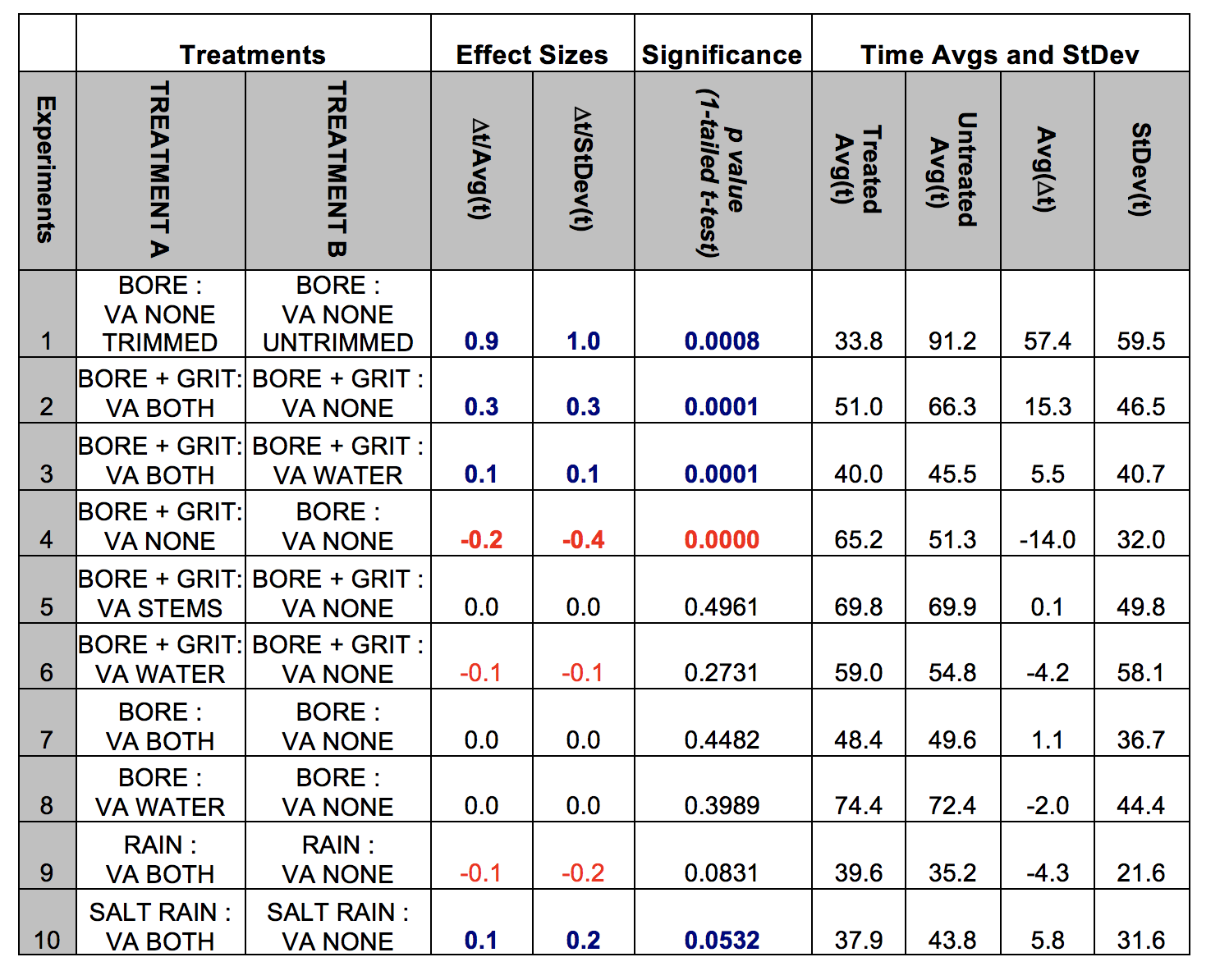
Table 6. Summary of effects for ten experiments at Te Kuiti with 1-tailed t-tests.

Table 7. Effects for the two preliminary experiments.
Result Experiments 1-4
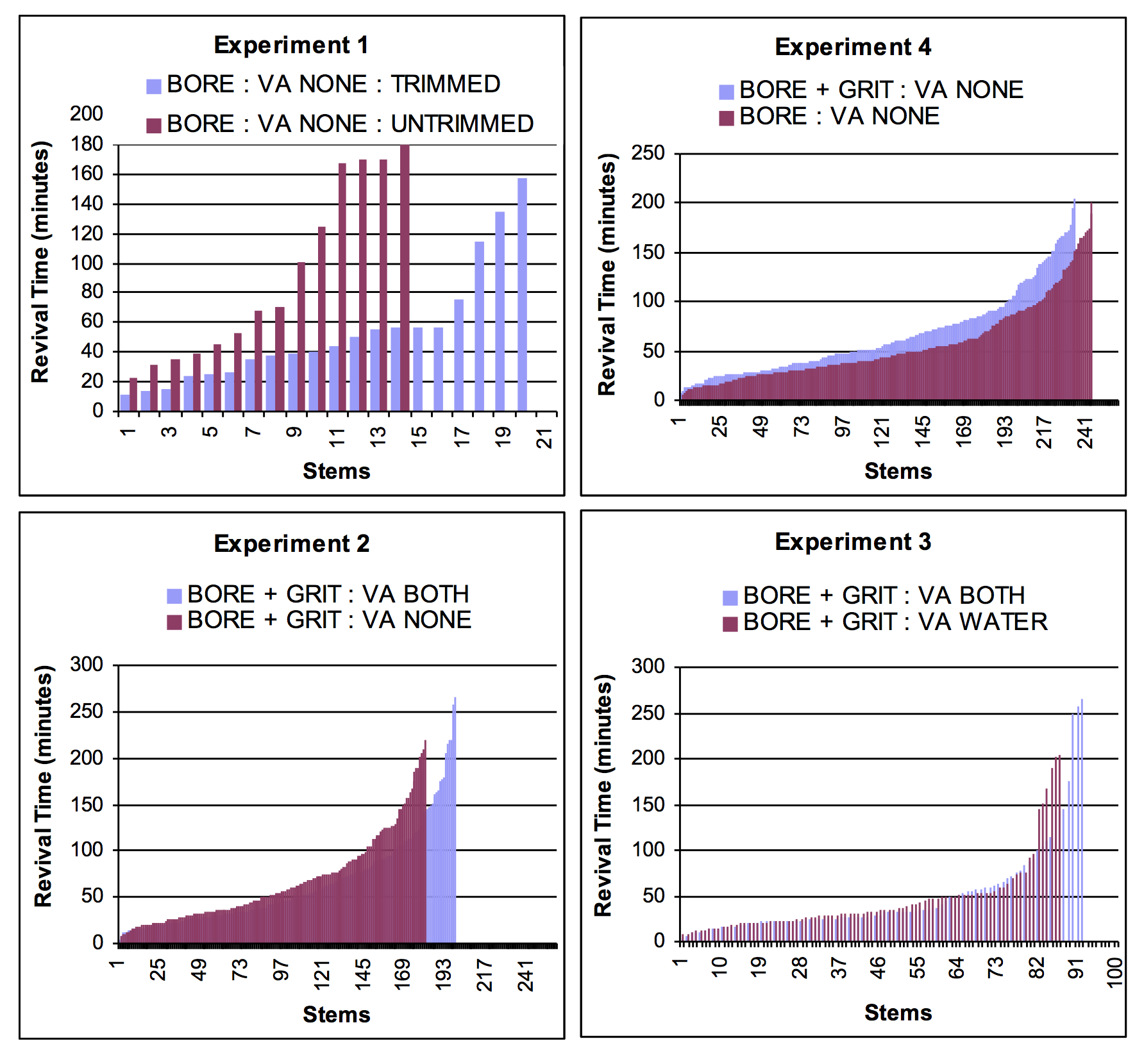
Figure 1. Experiments 1 – 4. The first four experiments have strong-medium effects.
Experiment 1 shows the strong effect of stem trimming.
Experiment 2 shows the strong effect of VA Both treatment when used with grit water, a 26% average improvement, with 15 min decrease in times.
Experiment 3 shows the VA Both treatment beats VA Water treatment by 13% on average, about 6 mins decrease in times.
Experiment 4 shows the negative effect of the grit when added to the bore water. It slows revival by 24% on average, about 14 minutes per stem.
Experiment 2 might first be suspected to work by some chemical process of nullifying the effect of the grit. But the VA treatment of the grit water alone (in Experiment 3 and 6) does not have the same effect. Other experiments below also show no clear advantage to the VA Water treatment alone, or to the VA Stems treatment alone.
Result Experiments 5-8
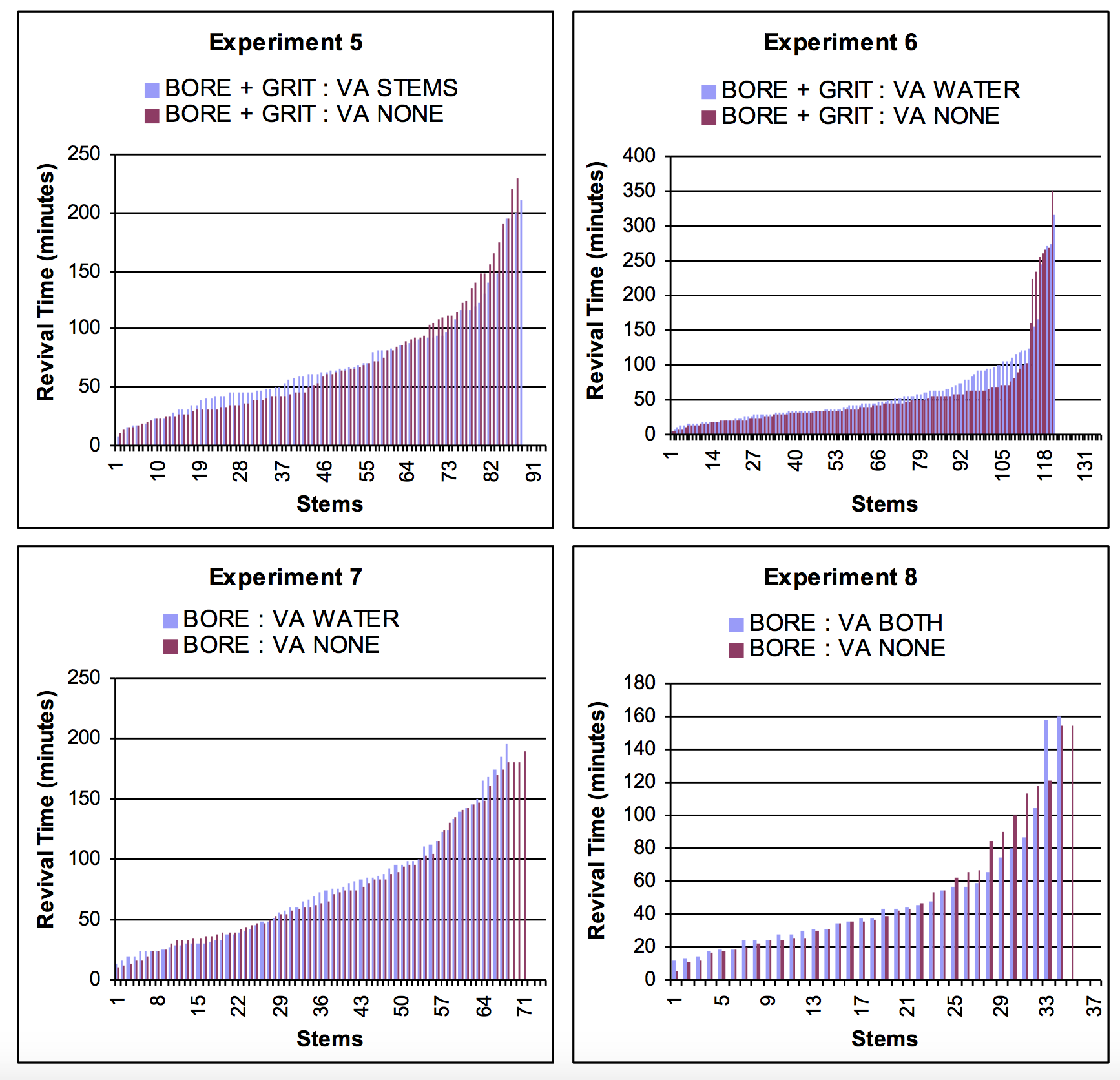
Figure 2. Experiments 5-8. These four experiments showed weak or no effects.
The two noteworthy points shown here are: (a) the EM treatment only appears to work with water containing impurities (grit), and (b) the EM treatment does not appear to have its distinct positive effect unless both stem and water are treated together. Treating either water or stem separately with VA slows down revival slightly, in the period of about 40 to 100 minutes.
Result Experiments 9-12
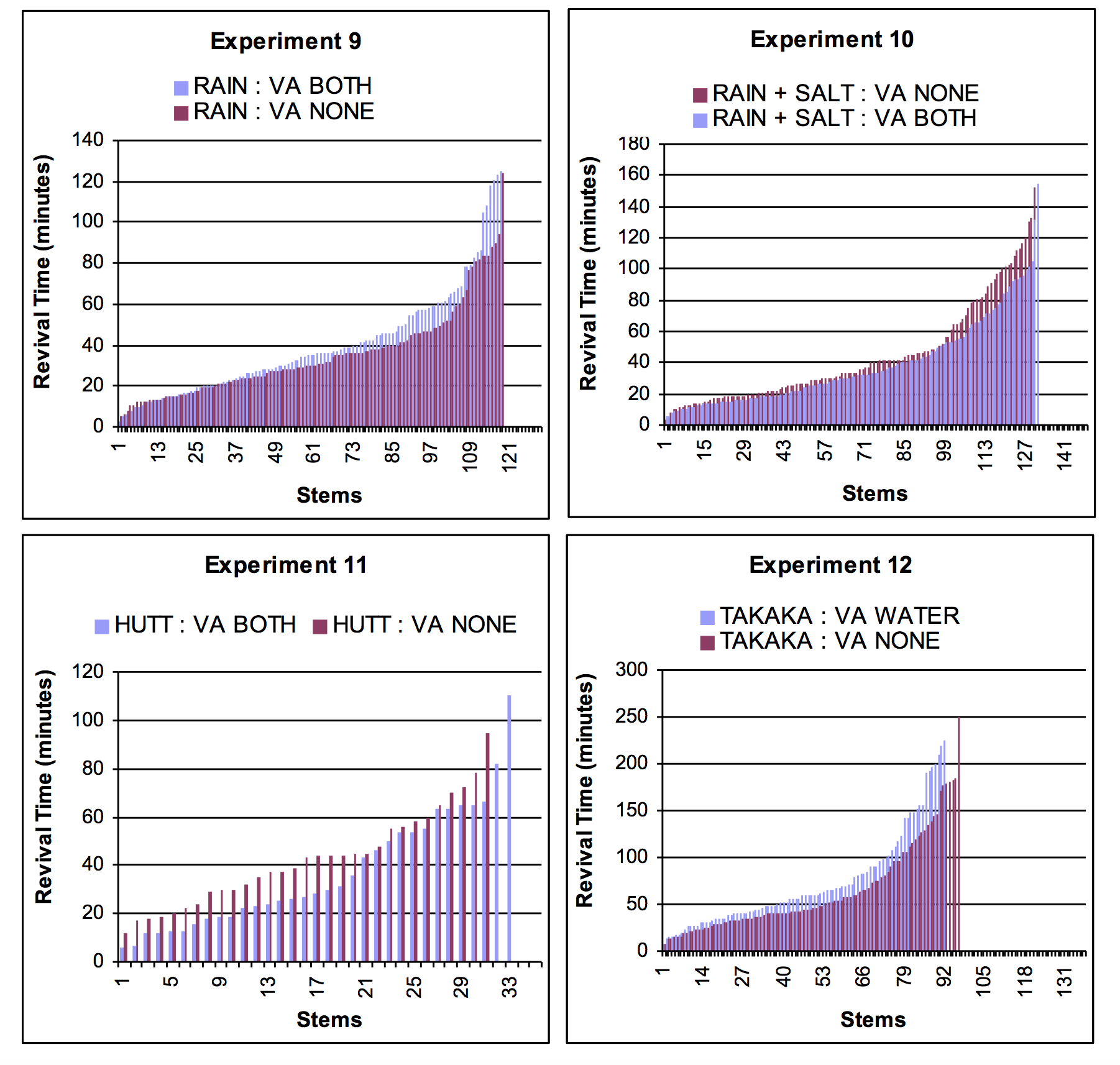
Figure 3. Experiments 9-12. These four experiments show strong-medium effects.
VA Both treatment for clean rain water had a small retardation effect, the same as for VA Stems treatment. Given the addition of (50 mls) of salt to the clean rain water, the VA Both treatment improved revival by 14%, or about 6 minutes, with the effect coming into play after about 30-40 minutes. The Hutt and Takaka samples were early in the process, but are included for completeness (especially as the Takaka experiment initially appeared anomalous). The Hutt sample in experiment 11 was the first time the positive effect was seen. The Takaka sample in experiment 12 was the first set of trials, and only water was treated, not stems in water. This shows a negative effect of the VA Water treatment, similar to experiment 6. This should only happen if the Takaka water is receptive to the EM treatment. It is concluded that failure to treat the stems results in slowing the revival, at least initially.
Experiment 1 Detail. Stems Trimmed versus Untrimmed
This detail is shown to emphasise that the statistical data does not include the data in the tails. In this case, the effect took only 21 trials to become evident. Additional trials were not done, as the effect is well known, and it was not the purpose to investigate it. To illustrate the tails, the full data for this case is shown in Supplement 2.
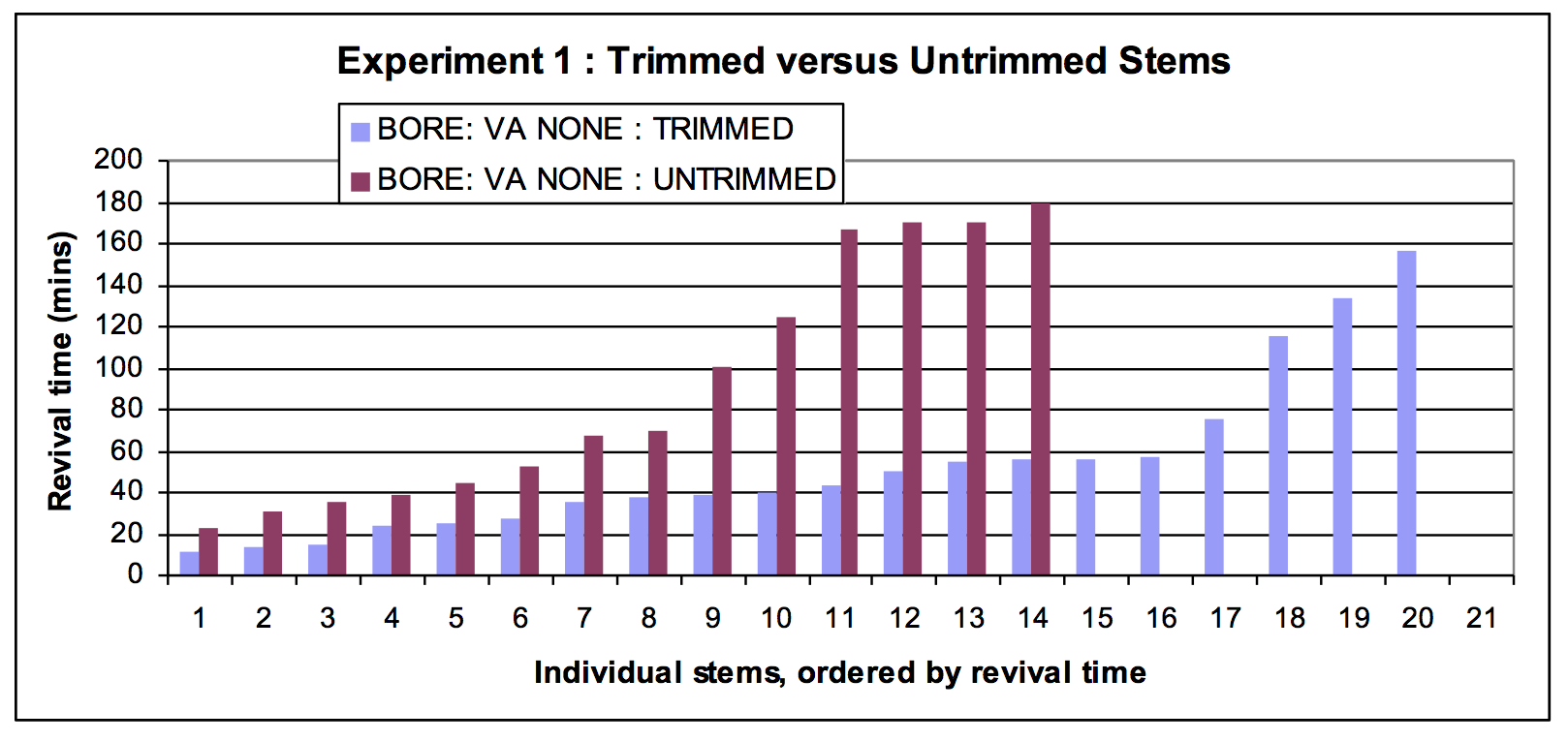
Figure 4. Experiment 1. Trimmed versus Untrimmed Stems.
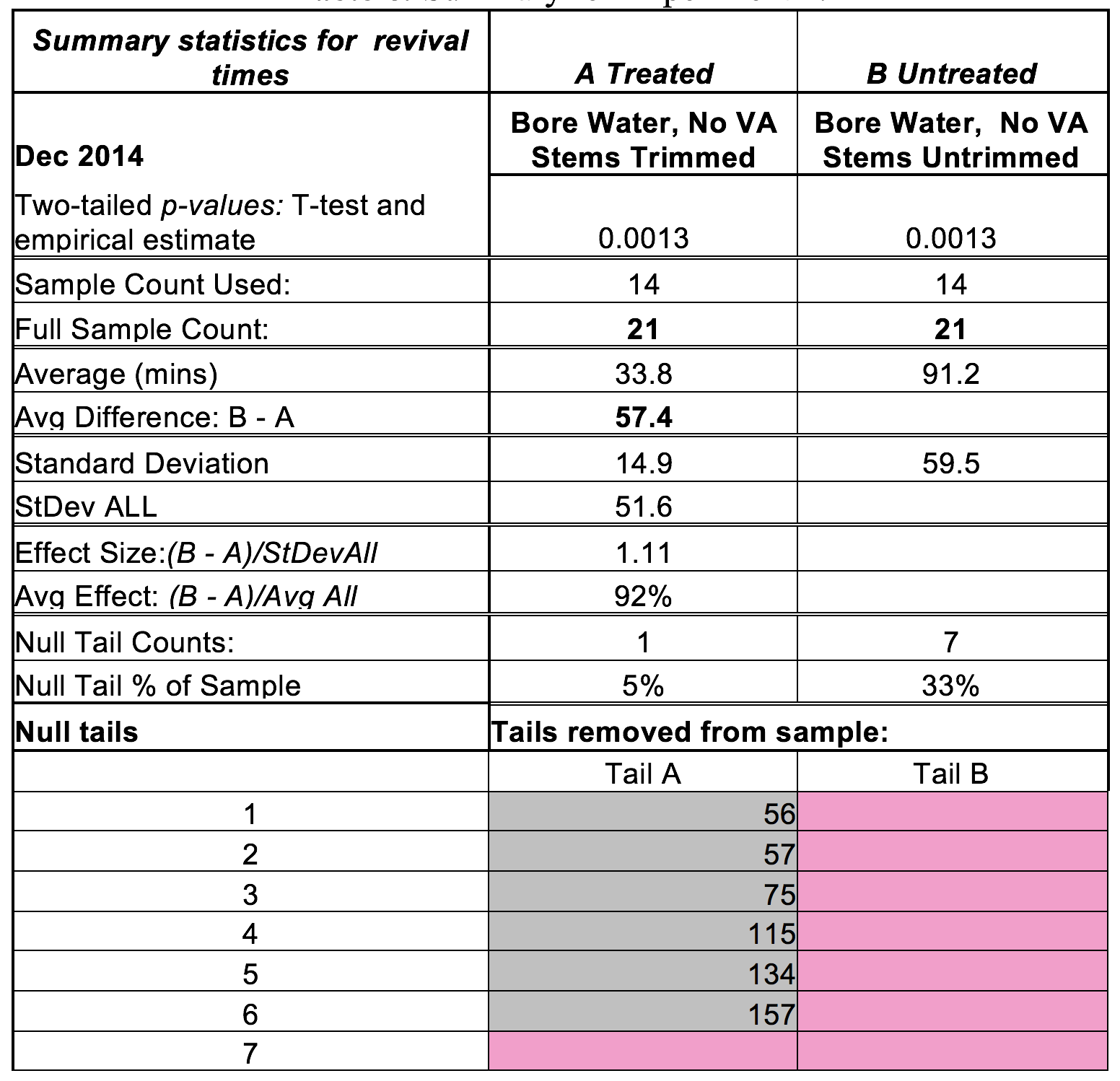
Table 8. Summary for Experiment 1.
Wilting Periods
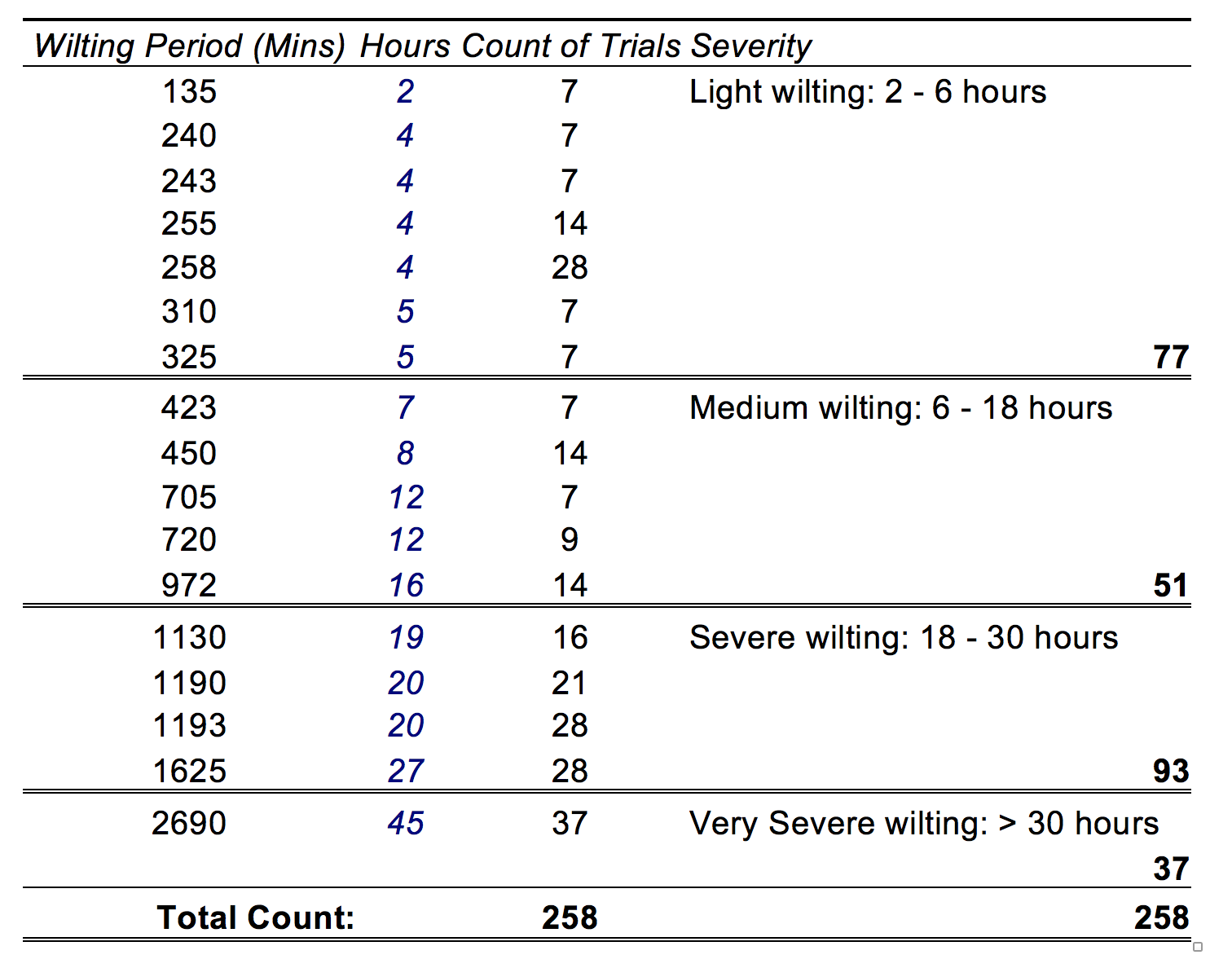
Table 9. Wilting periods for trials of VA Both against VA None in Bore + Grit.
We next consider the variation in the pattern between using light-medium wilted stems, severely wilted stems, and severely wilted stems, for the previous experiment. The range of wilting periods for the experimental treatment is shown below.
The influence of wilting period on revival time appears in the following correlations. This also shows the correlations of revival times of individual paired stems.
The variations are broken down in the next three sections, showing results separately for light-medium wilting, severe wilting, and very severe wilting.

Table 10. Correlations with wilting periods for trials of VA Both against VA None.
Experiment 2 Detail. Bore + Grit : VA Both

Figure 5. Bore + Grit: VA Both versus VA None, combining light, medium and severely wilted samples, excluding the very severely wilted sample.
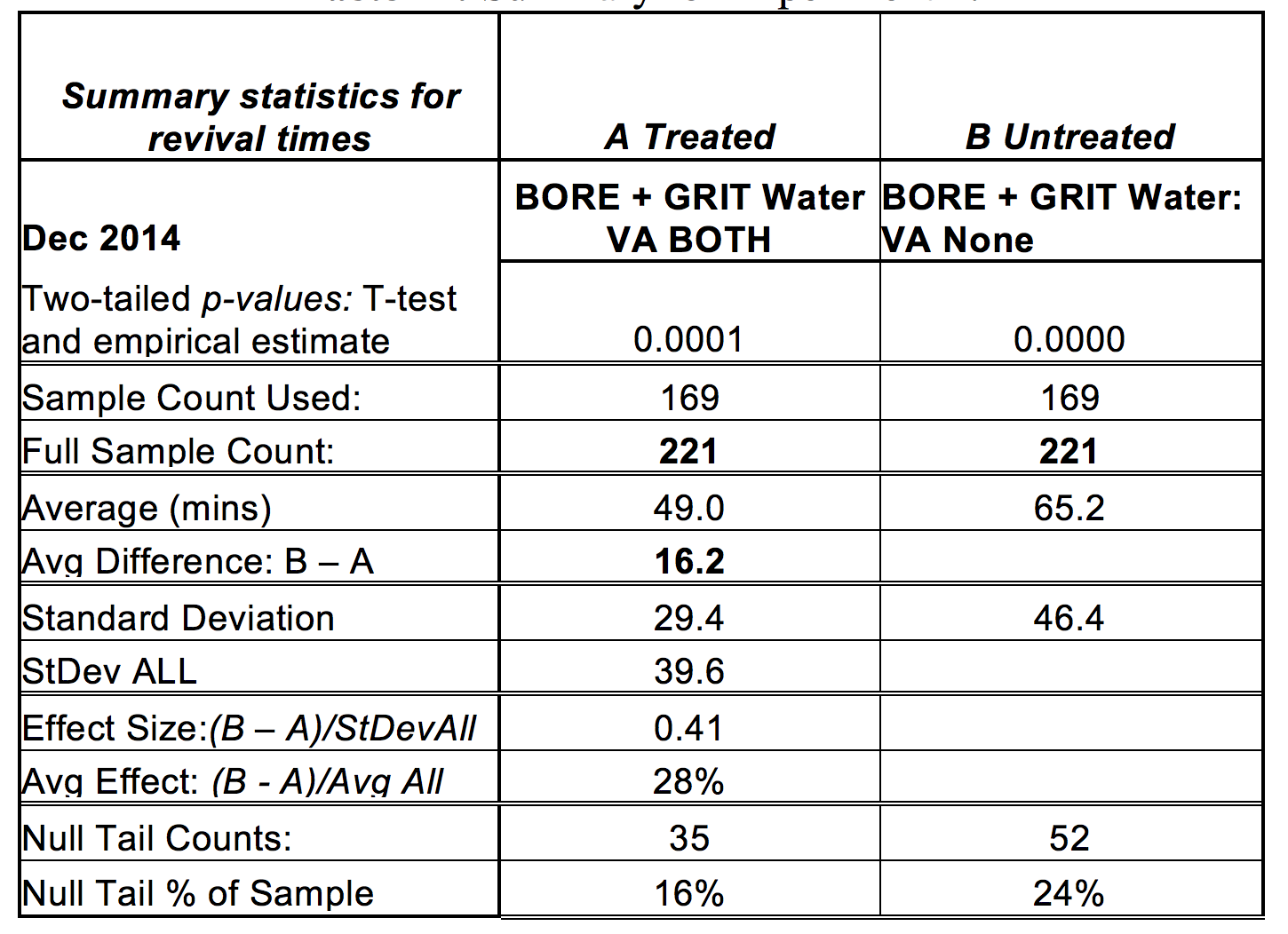
Table 11. Summary for Experiment 2
This represents multiple daily experiments (221 trials). This excludes the very severe wilting trial, presented separately below, but includes all trials of VA Both against VA None using the BORE + GRIT water. Daily experiments consistently showed a similar pattern. Using the BORE + GRIT water, and treating both water and stems with VA, speeds up the revival by about 28% on average, with an effect size of 0.41. This is a large effect, and very highly significant (p = 0.0001). Data was accumulated over 8 separate days of experiments. It appears that VA treatment makes no difference for approximately the first 20 minutes, and the effect becomes progressively more pronounced for stems that take longer to revive. The VA treatment has a large effect on the tail – 34 stems failed to recover with VA treatment, versus 52 without VA treatment. The tail is too long to show here, but includes significant numbers of very long wilting periods, because some of the experiments used severely wilted flowers.
This is the main positive result. It first became evident in the Lower Hutt trials in December 2014, but that data is not combined here as the water type was different.
Experiment 2a. Light-Medium Wilting: VA Both versus VA None
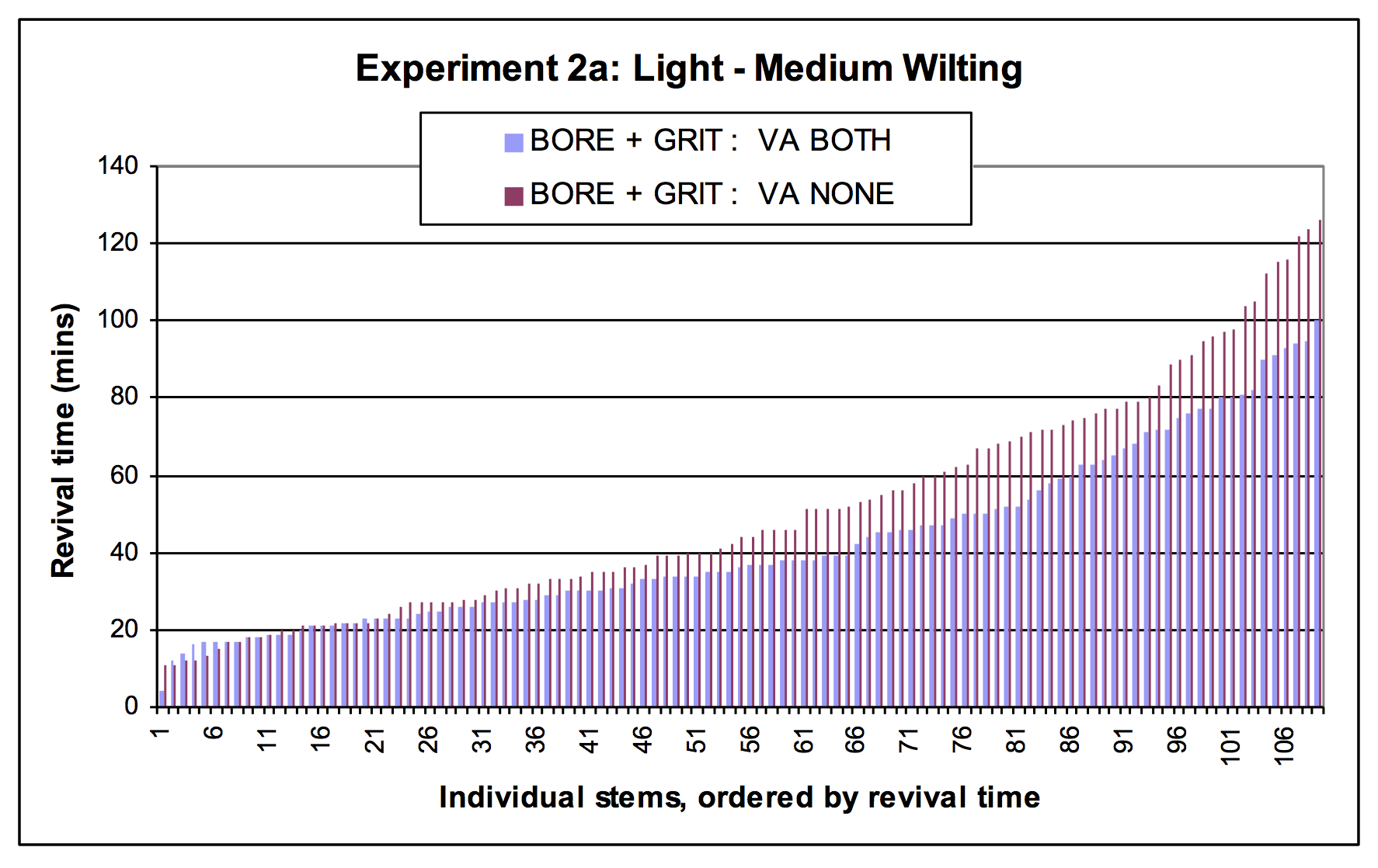
Figure 6. BORE + GRIT Water: VA Both versus VA None, Light-Medium Wilting.
Experiment 2b. Severe Wilting: VA Both versus VA None
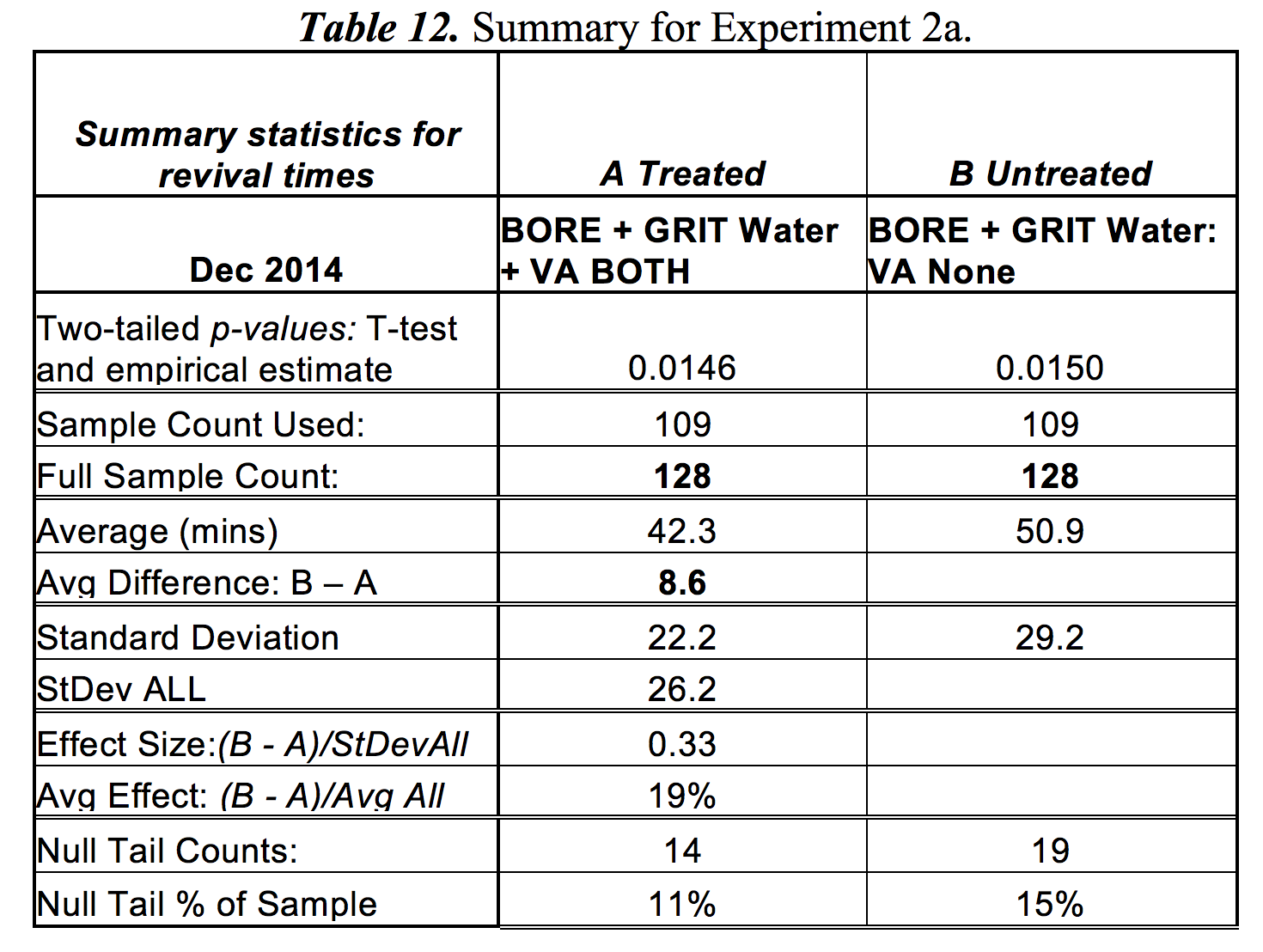
Table 12. Summary for Experiment 2a.
The treatment effect is highly significant, and still quite pronounced, with 19% change in average time, and effect size of 0.33. However it is much less than the 28% change and 0.41 effect size for the full sample. Revival times are generally shorter.
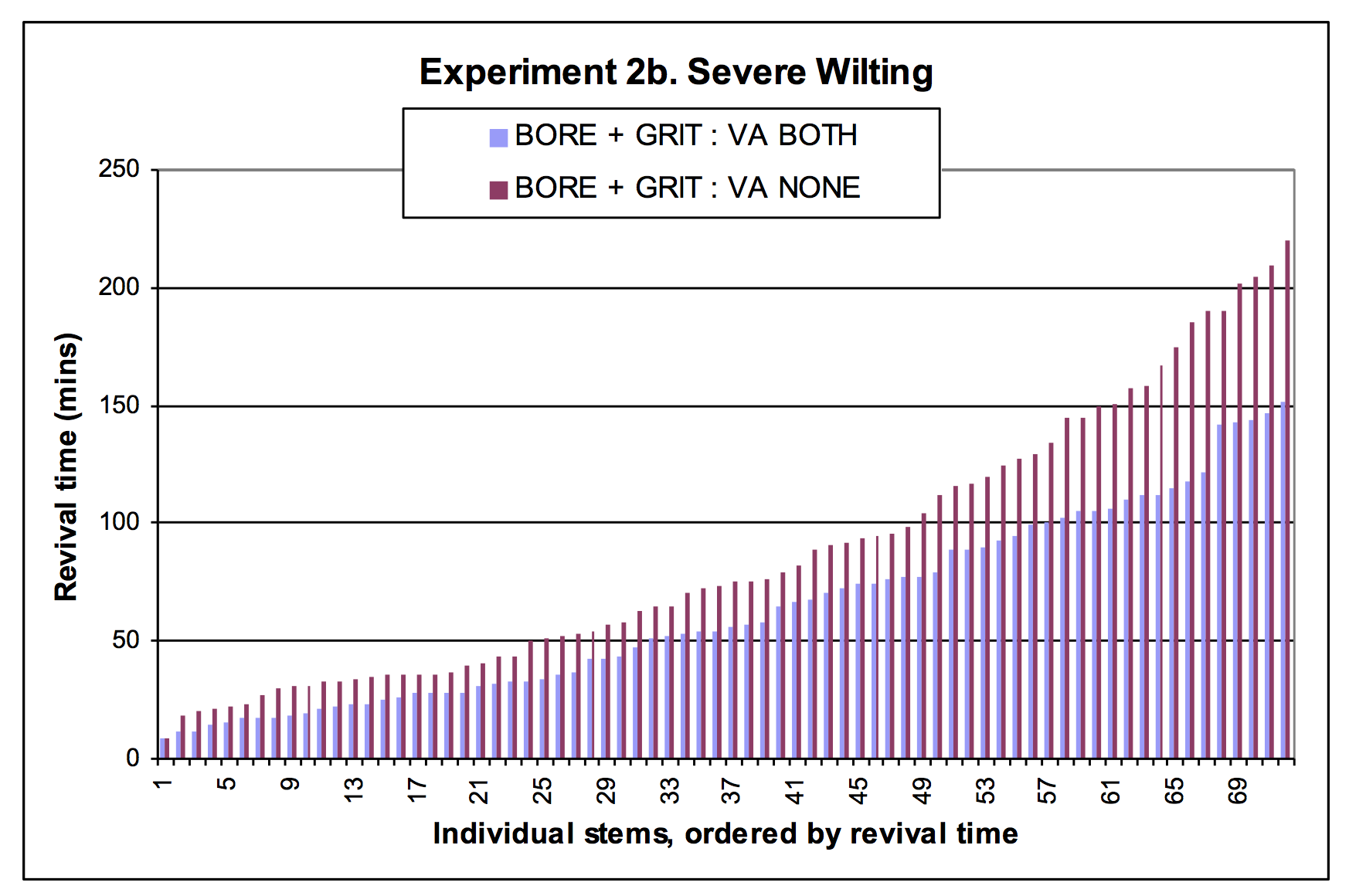
Figure 7. BORE + GRIT Water: VA Both versus VA None, Severe Wilting.
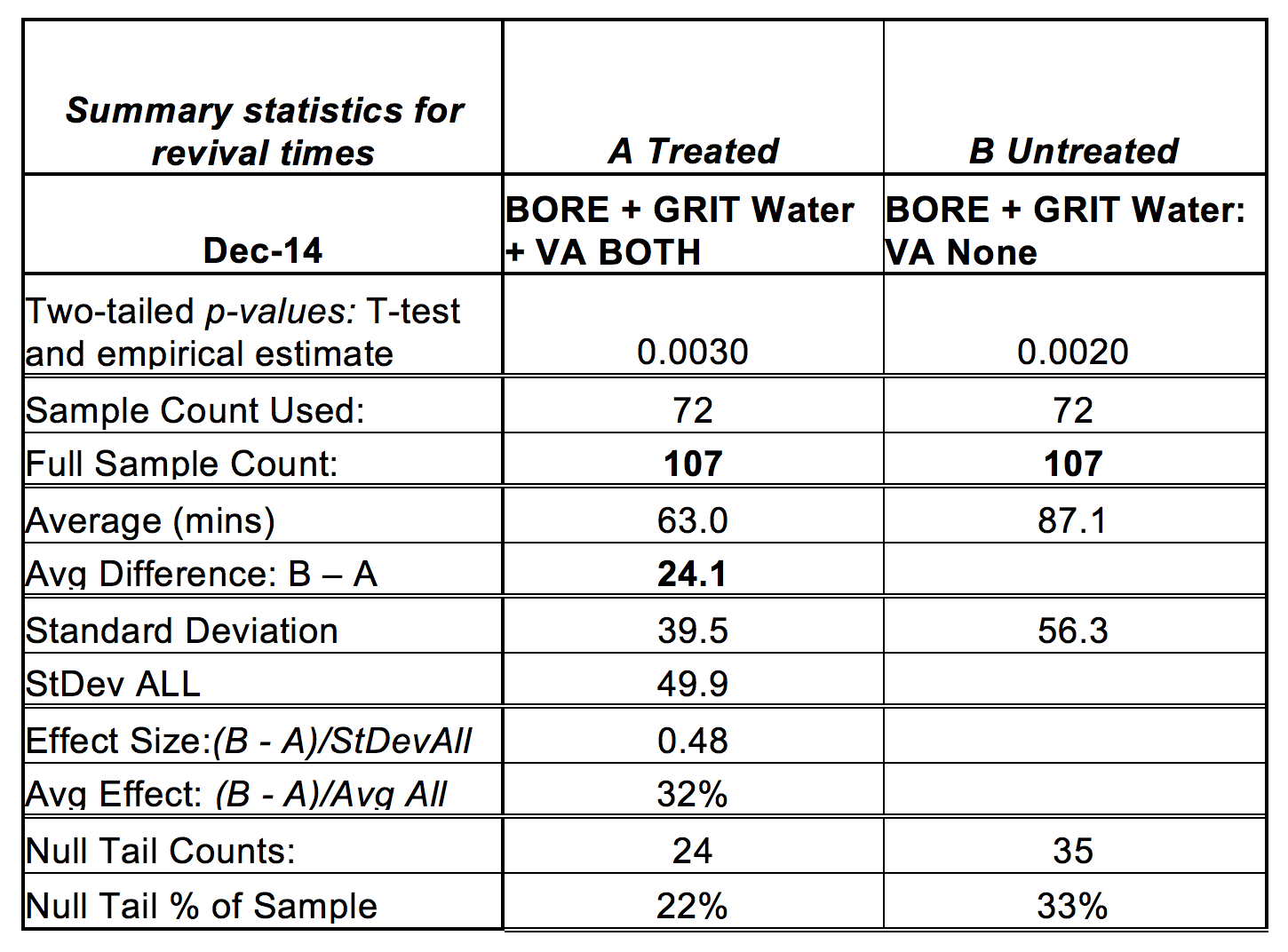
Table 13. Summary for Experiment 2b.
This is a sample of severely wilted stems, wilted between 19-27 hours. The effect of VA treatment is stronger for these than light-medium-wilted stems, with 32% (versus 19%) average difference, and 0.48 (versus 0.33) effect size. VA successfully revives multiple stems that do not recover at all without VA treatment. This is seen in the tail, with 24 failed revivals with VA (22%), but 35 without VA (33%).
Experiment 2c. Very Severe Wilting: VA Both versus VA None
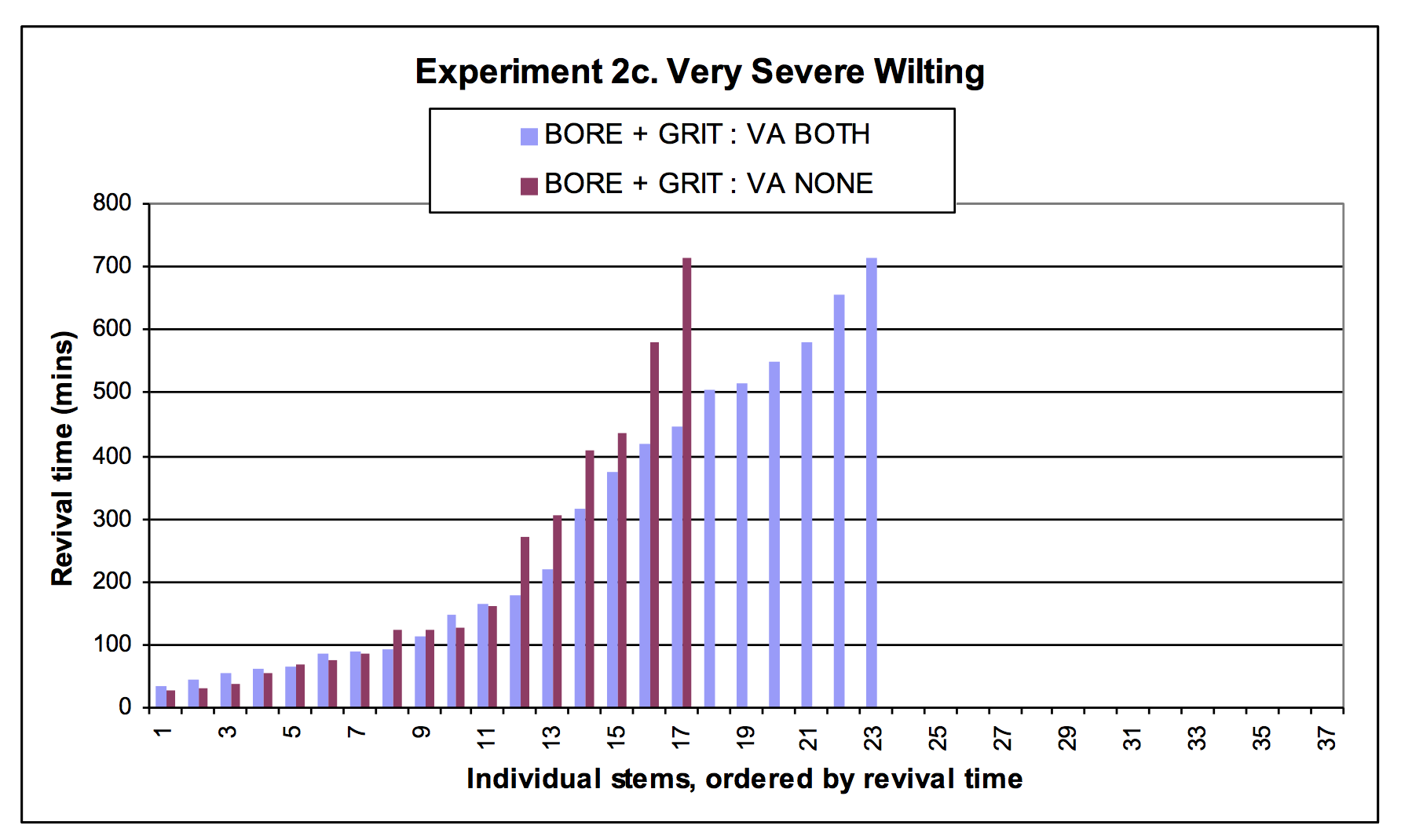
Figure 8. BORE + GRIT Water: VA Both versus VA None, Very Severe Wilting.
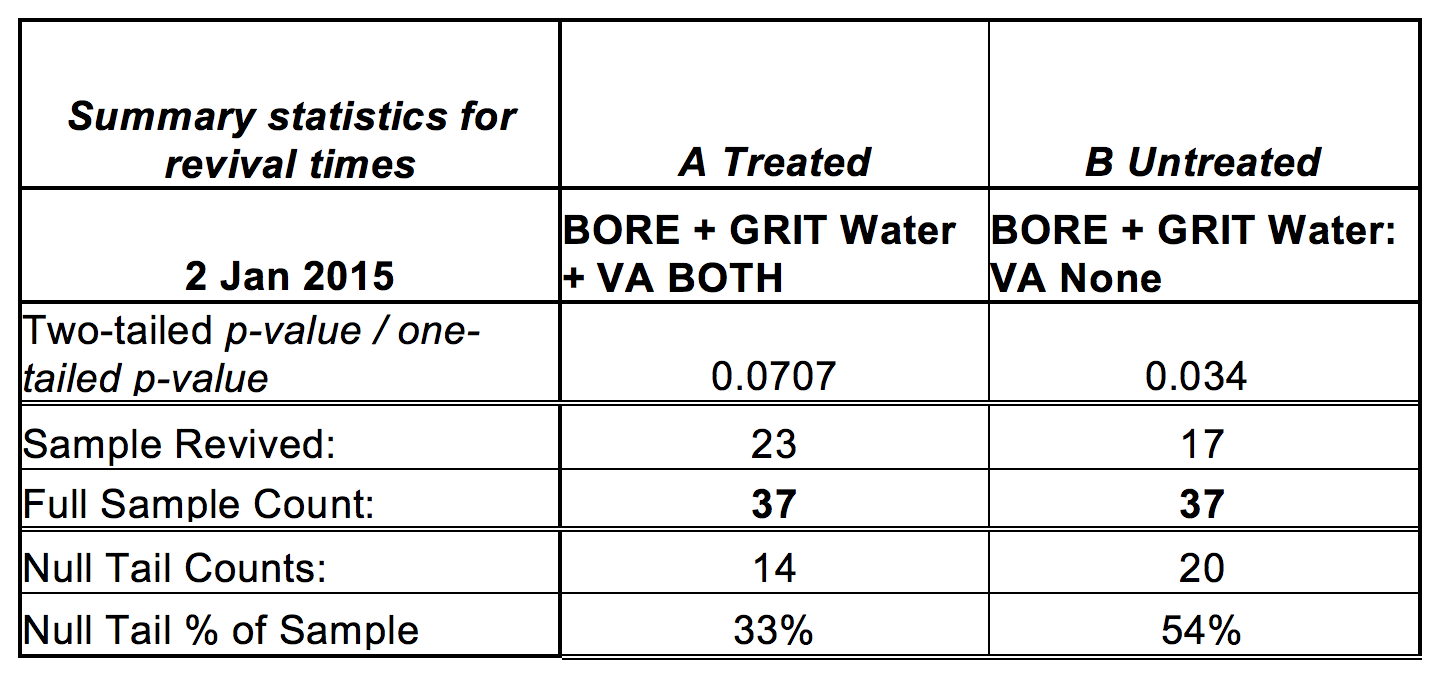
Table 14. Summary for Experiment 2c.
The revival times are very long, and the untreated sample is now being dominated by stems that fail to revive: 54% of the untreated sample and 33% of the treated sample. The tails are left in as gaps (0 values) in the graph above to emphasise this. The dominance of these tails means that the statistical description used previously in no longer very meaningful. The difference between treatments on revival counts is significant on a one-tailed test at p = 0.034. Although this sample is relatively small (37), there appears little doubt about the effect. The VA treatment effect seems to come into play here after about 200 minutes. As well as recoding revival times, stems that started to revive but failed to fully revive in 12 hours were also recorded. The effect of VA in reviving a larger number of stems is reflected in the counts, graphed below.
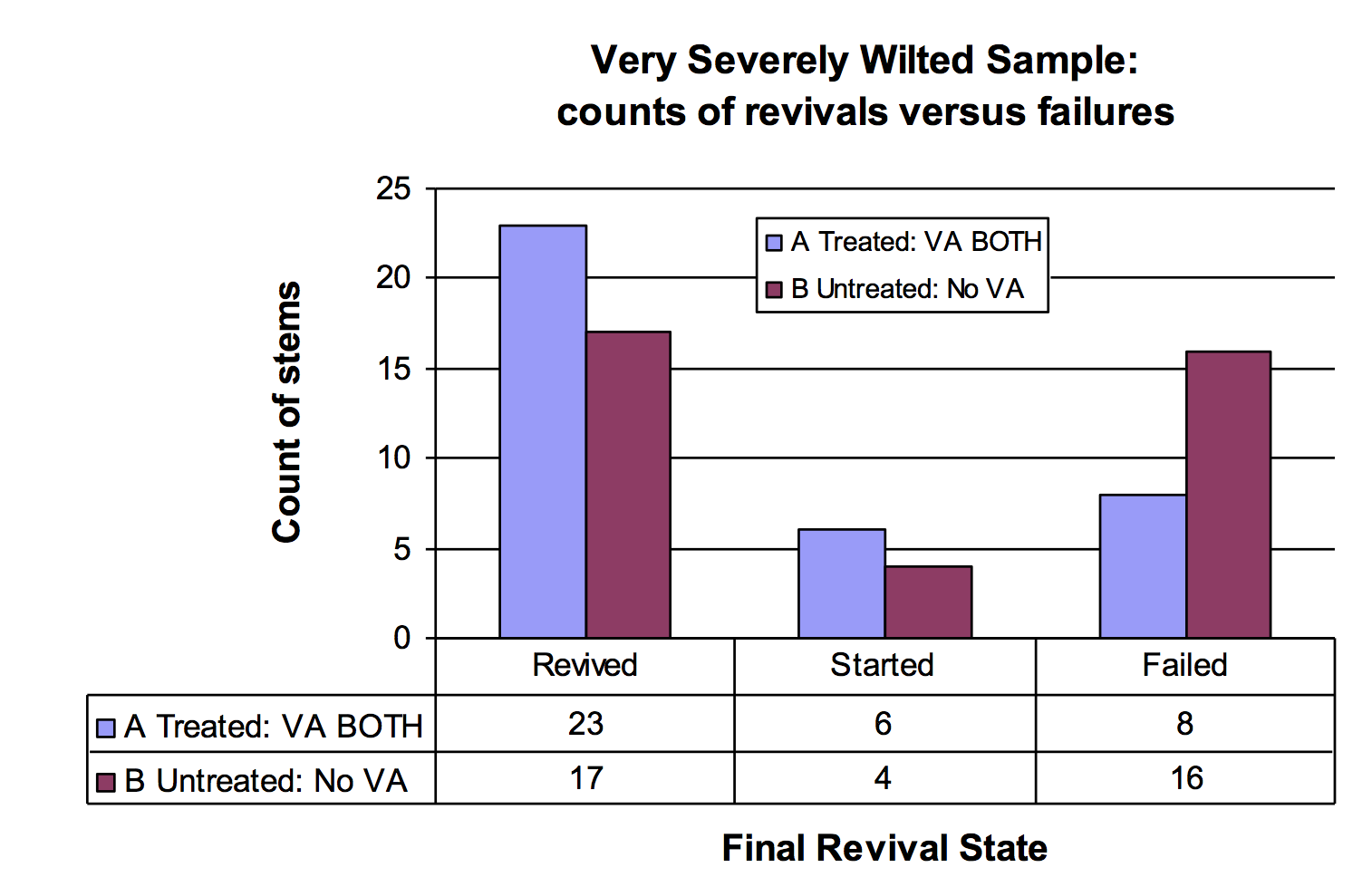
Figure 9. VA Both versus VA None for very severely wilted sample.
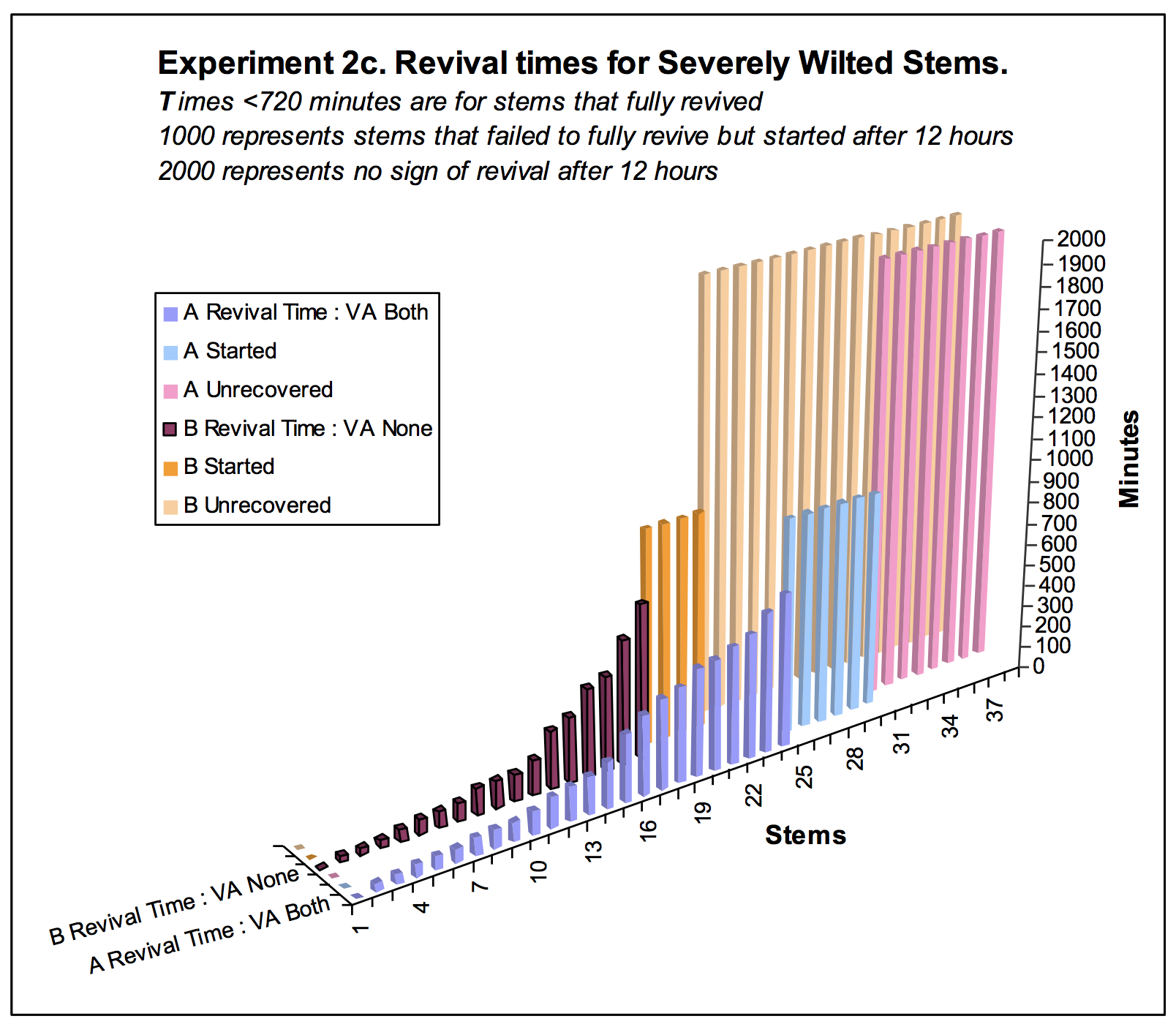
Figure 10. VA Both versus VA None for very severely wilted sample
The VA treatment apparently helps severely stressed cells recover osmotic function to build turgor pressure. This indicates a subsequent effect on plant metabolism.
Interpretation
The VA treatment was found to be effective when the treated water had impurities, and when the VA treatment was applied to stems and water together. In this case it significantly increased water transport within the stems. The effect is most dramatic on severely wilted stems, where the recovery rate greatly increases, showing it aids highly stressed cells to begin functioning again. It appears that addition of impurities to the water is necessary for the treatment to have a strong and immediate effect. Dissolved minerals (salt) alone produced a significant effect (14%; 6-minute average difference), but impurities provided by the grit (colloids, larger suspended particles) produced a much larger effect (25-35%; 15+-minute difference). The cell water in the stems is rich in salts and minerals, and this may provide a similar enhancement of effects on stem water. The effects became evident after about 20 minutes. I draw attention to the following points of interpretation.
- RF treatment notably enhanced water transport in the plants, but only when the treated water had impurities added, and the effects notably increased when both the bulk water and the stem water were treated together.
- Adding impurities to the water introduces electrically active particles, but also introduces micro-bubbles, and this may be a relevant factor.1
- Effects depend not only on the potential of the water solution to interact with the RF radiation initially, but also on a mechanism to retain effects from this interaction. Particles and micro-bubbles may play separate roles in such a process.
- It seems the treatment confers some holistically dependant property, as the behavior is different when the water is treated separately from the stems.
- It seems likely that the effect on stem revival is mediated by enhanced osmosis through the cell membrane, as this is a critical process in creating turgor pressure.
- It seems equally likely that the effect is mediated by enhanced capillary transport, increasing the flow and availability of water through the vascular system.
- It appears prima facie that the system does not acquire the state responsible for enhanced water transport immediately, but develops this state within about 20 minutes, from the fact that effects were not apparent in the first 20 minutes.
- However, this might simply be due to a relative difference in effects on fast-reviving stems. Relatively few stems revive in the first 20 minutes, and those that do are already in a state enabling rapid recovery, so they may be relatively unaffected by enhanced water transport in this period.
- The primary goal of this experiment was to verify a phenomenon that has been reported anecdotally, and this was successful.
- The experiment supports water scientists taking such EM treatments seriously as a topic of fundamental research.
- It also identifies flower revival as a domain where such effects can be readily detected, and inferred to affect processes of further interest in their own right.
- Different kind of research is needed to establish effects claimed by manu-facturers of such water treatment products, i.e. benefits for plant growth, health, nutrition, fertilization, etc. Such effects may be tested in field trials, without an understanding of fundamental mechanisms.
- After 20 years or more of controversy, many orthodox water scientists continue to deny RF water treatment as a real phenomenon, or worthy of scientific attention, and yet such effects appear readily observable in simple experiments.
Discussion: Explaining the Phenomenon
The goal of science is to provide explanations, not merely to collect evidence of phenomena. The present results, and many others in the field of RF effects on water, raise a serious explanatory challenge. I conclude with a brief discussion of this, and propose a possible explanation. We can separate two parts required in an explanation of this phenomenon. (1) How does the EM radiation affect the water properties in the first place? (2) How does this subsequently enhance water transport in the plant?
On the first question, I first note some basic facts about EM interaction with water. Pure water strongly absorbs EM radiation only at a few special frequencies, notably in some microwave and infrared bands that correspond to natural vibrational resonances of water molecules, and at ultraviolet ionising frequencies that provides energy sufficient to displace electrons from the lower orbits of hydrogen or oxygen atoms. These energies are all vastly greater than those in the RF range. Interaction with EM radiation is much enhanced by the presence of dissolved minerals like salt (NaCl), or anything that provides a source of “free” electrically charged particles. Salt water absorbs across the whole spectrum of EM radiation to a moderate degree, including low-energy radio waves, but still not efficiently (e.g. sea water is transparent to a significant depth, only weakly interacting with visible light, and similarly with radio waves.) We can assume a fraction of the RF radiation interacts with the water solution, but the mystery is how this energy could produce significant effects. This frequency has such low energy that it is difficult to see how it could modify water properties directly. The fact it does so is evident from a range of pioneering studies, including those surveyed in (Leahy 2000). But I have not found any convincing explanation of the fundamental mechanism of RF interaction with water.
There is a related, and even more striking phenomenon recently observed, the ionization of salt water by RF radiation, discovered by J. Kanzius, a self-taught inventor, in 2007. In experiments reported in (Roy, Rao, Kanzius, 2008), salted water subject to polarized RF radiation at 13.5 MHz (half the VA frequency) ionizes sufficiently rapidly to produce enough hydrogen to sustain a steady flame. Hydro-gen production starts immediately the radiation is applied, and ceases when it is stopped. The rate of hydrogen production increases with the NaCl concentration. The only previous method known to ionize water, used by Faraday in 1831, is to apply a significant voltage (>1.2 V). The RF is far below the requisite ionizing energy. The total energy that could be transferred from the RF radiation to the water is far less than required to ionize the hydrogen in the “burning water” experiment. In the RF water treatment examined here, the total energy transmission into the water is much less again, as the radiation is applied for only 20-30 seconds. And the same energy can be applied to somewhat larger or smaller volumes of water, apparently with the same effect. The effect is not dependant on the total RF energy density applied to the water.
I infer that the RF radiation does not provide the primary energy in either phenomenon. As an alternative hypothesis, I suggest it “catalyzes” a process enabling the water to absorb energy from another source. This source is most plausibly IR (infra-red) radiation: heat radiation that saturates the environment, and helps keep the water at an equilibrium temperature. This is being weakly exchanged with the water in any case, and is integral to maintaining its thermal equilibrium. IR radiation is vastly more energetic than the RF radiation being applied. The source might also be microwave radiation, from the sun, or possibly even CMB (cosmic microwave background radiation), although this is probably too weak, although relatively energetic. (The CMB saturates the universe at a temperature of 2.73°C. The energy is in a distinct black body spectrum, peaking at around 150 GHz, which is some 5,000 times more energetic than the 27 MHz frequency of the RF radiation.) Wavelengths above about 20 GHz are absorbed by water in the atmosphere, but there are MW bands at the Earth’s surface. Finding a consistent source is an important consideration, as the RF treatment appears consistent, e.g. in sunlight or shade, in which IR radiation levels vary widely. In any case, there are many EM wavebands from microwave to infrared that are not already absorbed naturally by water or atmosphere, and represent significant energy sources.
The hypothesis is that the RF radiation prepares the water solution to absorb energy from some such more energetic IR or MW radiation source – in wavebands that are not otherwise naturally prone to absorption. The question is how absorption could be enhanced by the RF radiation, and how the additional energy could then be stored in the water. I assume it must be stored without raising the temperature significantly, or it would be re-radiated or conducted from the water, returning it to the equilibrium temperature. The effects in question are not explained by increased temperature, i.e. by adding energy as heat. The phenomena are not produced just by heating, and the RF treated water temperature does not differ noticeably from non-treated water. The persisting storage of the energy in the water is also not by a chemical reaction. While there are some subtle chemical effects indicated (such as a small increase in peroxides, and increased solubility of certain compounds), there is no indication that the RF effects are driven by a chemical process. The only immediate plausibility seems to be that energy is transferred and stored as electrical potential energy, i.e. the water becomes statically “charged,” like a battery. This means the absorbed radiation energy is stored through charge separation. If this is sufficiently energetic, it can lead to ionization effects.
We must now consider the second part of the explanation: how does the RF water treatment enhance water transport in the plant? The theory of EZ water (exclusion zone water), as proposed by (Pollack 2013), has a striking coherence with the phenomenon being considered here. The EZ theory holds that liquid water can take on an ordered structure, resembling a crystalline lattice, with H2O molecules organized in a specific arrangement of hexagonally tiled layers. A key feature is that water so organized can act as a battery, supporting layers of separated charges over macroscopic distances. Pollack specifically proposes this structure to explain storage of energy in water, and believes the energy is absorbed from the IR spectrum. He argues that this energy plays a critical role in many common processes, including osmosis and capillary action. Pollack’s theory is a new synthesis, but as he emphasizes, many of the phenomena and ideas underpinning it have a much longer history. There is not just strong but conclusive independent evidence for various supporting phenomena, such as EZ structures (macroscopic zones that exclude other particles), the capacity of water to sustain charge separation and act as a battery, existence of complex large-scale water clusters, and many other phenomena.
For those sceptical of accepting such a heterodox theory as an explanatory framework, I would emphasize two major strengths of Pollack’s theory. One is its powerful unification, explaining diverse phenomenon under one common framework. Many of these phenomena have gone unrecognized in orthodox water science, precisely because they defy conventional explanations, or contradict an orthodox paradigm that sees liquid water as incapable of sustaining complex structures. This orthodox paradigm now seems unsustainable. Direct observations of complex water structures, and of various anomalous phenomena, are now too widespread to be denied. This includes the RF treatment phenomenon investigated here. As far as I can judge, Pollack’s EZ theory is the only explanatory framework that allows us to make sense of these phenomena.
A second strength is the micro-theory of the molecular arrangement responsible for creating and sustaining the EZ structure – a concept proposed decades ago by (Lippincott et alia, 1969) as the structure of “polywater.” This provides a foundational concept of how EZ states are physically constituted. It turns the explanatory inference of the role of EZ states into a fully-fledged micro-theory. The molecular arrangement is the lattice of hexagonally tiled sheets, offset with each other, as illustrated in (Pollack 2013, Ch. 4). This simultaneously explains net charge imbalance, regularity of the structure, extrusion of impurities, and other features. There is direct evidence of such structures (Pollack 2013, p.57), and this is a fundamental concept that gives the EZ theory real power and plausibility.
Pollack’s EZ theory provides an ideal framework to make sense of the RF phenomenon, if we can identify a mechanism for the RF treatment to energize the water in the first place. I suggest the following kind of mechanism. The RF treatment produces a preliminary ordering of the H2O molecules into coherent alignments, that are then able to absorb incidental IR or MW radiation, and begin to store energy by developing into full EZ structures, accumulating energy through charge separation. The RF radiation does not have the energy to produce any significant charge separation itself. But it has sufficient energy to rotate the water molecules (or larger water clusters, which also act as dipoles; e.g. (Ho, 2014)), and maintain them in some coherent alignment. Dipoles will rotate to align with the weak EM field of the RF photons. Rotation of molecules takes very little energy, compared with that required for charge separation. A slight tension is induced in the inter-molecular structure, which has weak H-bonding between molecules. This tensed structure forms planar latices, due to the common rotation of molecules, over significant distances involving thousands of water molecules. As the structure assembles, it becomes capable of resonating with higher-energy IR or MW radiation. The energy of these interactions would normally be dispersed, but the presence of electrically active particles or ions or micro-bubbles somehow allows the structures to stabilize as meta-stable states, and begin development of the persisting EZ structures. It appears that once such structures begin to crystallize they become self-assembling. Thus the RF treatment is a catalyst for the reaction.
The general scale of the RF radiation energies and wavelengths, compared to rotational energies and molecular lattices, appears consistent with this hypothesis. The RF radiation has a wavelength of about 10 meters. This means that the electric field of the wave has a consistent direction across the whole body of water (about 0.1 meter radius) at once, and the EM field lasts for a significant time as each RF wave passes (10M/c = 3.3 x 10-8 secs), some 1,000 – 1,000,000 times the interaction time with MW or IR light. The rotational energy of a single water molecule rotating in a polarized EM field with a period of around 10-8 secs is much less than the energy of RF photons, by a factor of 1,000 or more. It can thus be expected to induce coherent motions, and align molecules into structures that presumably higher-energy IR photons can interact with through charge separation. Thus the RF radiation creates micro-structures the prefigure the EZ structures, and “catalyzes” the water to interact with IR or MW radiation that it is otherwise transparent to, or has only weak random thermal interactions with.
Of course this is a speculative hypothesis. Nonetheless I think it is indicated by the phenomena for the simple reasons that: (i) IR or MW radiation appears as the only viable candidate for an energy source, and (ii) storage of energy in an EZ-type structure appears as the only viable candidate to explain subsequent effects. I should add that such a mechanism does not contradict laws of thermodynamics, or energy conservation. Energy is being drawn from background EM radiation. Its conversion from heat into electrical energy stored in the water is merely being catalysed by the RF radiation. Conversion of radiation into stored electro-chemical energy is of course achieved by other means, such as photosynthesis, solar panels, etc. There is no a priori reason, from thermodynamics or physics, to think radiation energy could not be converted and stored in inter-molecular electrical energy in a “crystallization” process, which is what Pollack’s theory essentially proposes.
Appendix
Appendix 1 -Measurement Procedure Details
Testing equipment consisted of identical 9.6 litre buckets to immerse the stems, and 10 specially constructed holders, made from wooden slats with holes drilled to loosely hold the stems 20 degrees from vertical, and enable accurate judgement of revival. The holders had plastic backing sheets, to help keep stems upright in the water, and trim them to a common length. Stems measured 9.5 cm from the point they entered the top of the holders to the bottom of the backing sheet. Their complete length additionally includes a curved section (the “hook”) above the holder, which depends on the point where they bend when wilting. This varied from about 1-4 cm, and was equivalent for each pair.
After picking a larger number of stems (180-200), they were paired off according to likeness (wilting degree, wilted stem angle, stem diameter, flower size and appearance), and one of each pair placed randomly in paired stem-holders. Pairing the stems and randomising the choice from pairs helps reduce measurement error or systematic bias. Long straight stems were selected and cut above the first branching node, and then cut to a common length for wilting. Stems were trimmed by at least 2 cm, to the uniform length of the plastic backing sheets, immediately before being placed in water for revival (except in particular experiments to test the effect of stem trimming itself).
After immersion, all stems were timed until they had straightened to a horizontal position, which is approximately halfway between the fully wilted state, and the fully upright state. In time, practically all moderately wilted stems recover to a vertical position. There is experimental error in judging when the stem is horizontal, but with some care and practice, and use of plastic backing sheets to maintain positions, it is possible to judge this quite accurately enough. The critical factor is that both pairs are judged as revived by the same criteria.
The criteria used here was that the start of the stems at the flower heads have to distinctly reach horizontal. This means the face of the flower appears vertical. Note that this is at a sensitive point where the mechanical leverage of the head downwards (due to gravity) is greatest. The stem requires substantial internal cell pressure to raise the weight through this horizontal stage. Many stems begin to revive, but “stall” for a period of time, at an angle a little lower than horizontal. The time taken for revival is dependant on the rate of movement through this stage. This measurement needs to be done carefully and consistently: stems that “stall” below horizontal must be left until they re-start movement, and reach true horizontal.
Times were recorded to the closest minute. For most stems (reviving within about 5-60 minutes) this can be judged consistently within 1-2 minutes, as most stems make a clear transition through the horizontal in a time period of 1-2 minutes. The resulting standard errors in average times are then expected to be much less than 1 minute. This gives good measurement reliability, as effects of interest are in the range of 10+ minute differences in time averages between treatments. For stems that take a longer time to revive (>100 minutes), measurement uncertainty increases, to perhaps to 3-5 minutes, and may become 5-10 minutes for very slow revivers (e.g. >200 minutes).
The domain of slow revivers is more of a concern for measurement reliability, and of interest for the long-term effects. Data from very slow revivers (forming the tails of the distributions) is truncated in the analysis of averages. The experiment is stopped and remaining stems marked as not revived when the majority have revived, and those remaining show no sign of revival. This truncates the samples, generally at 150-180 minutes. Some experiments on severely wilted stems recorded very long times.
Appendix 2 – Data Set Illustrating Tails
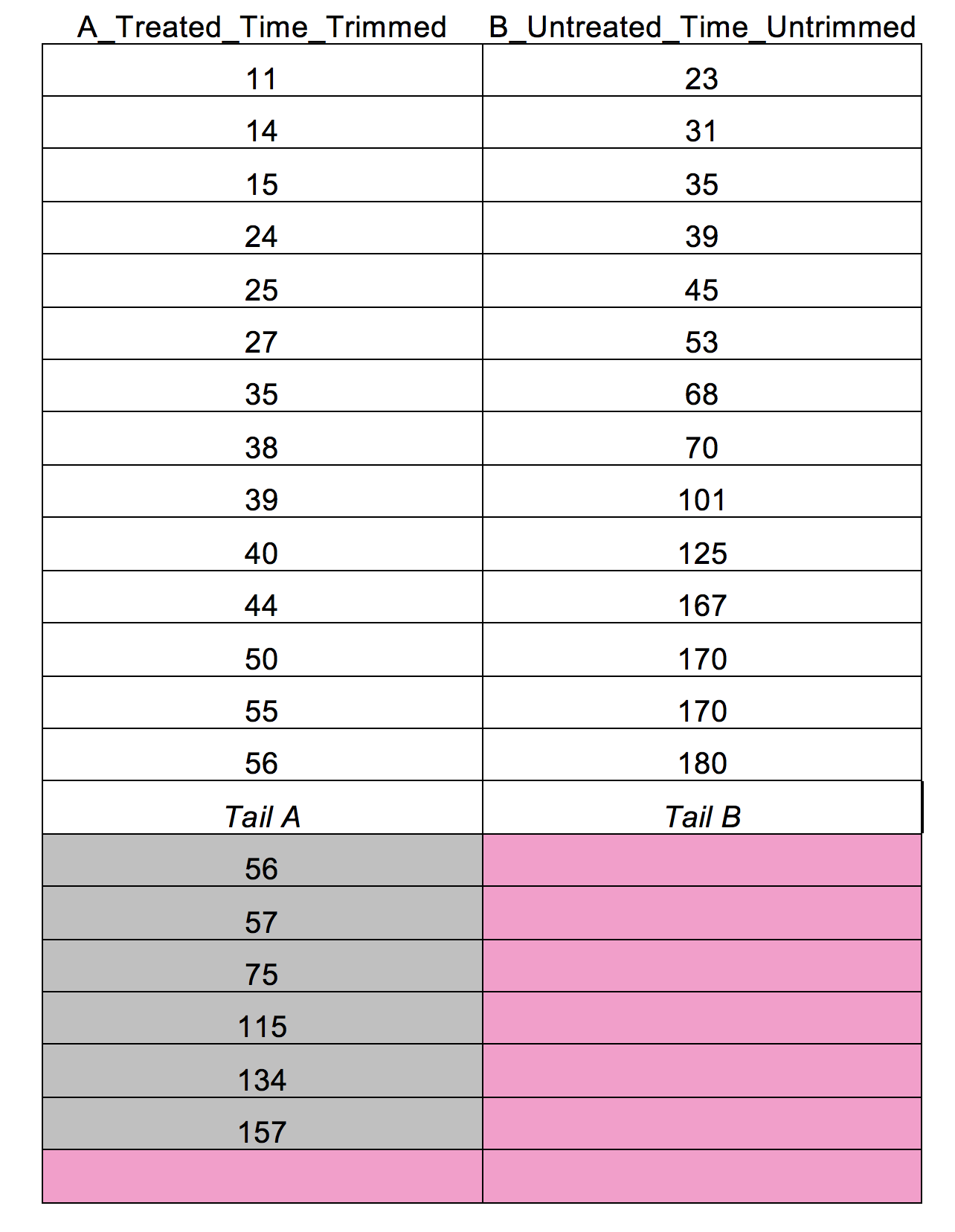
Table 15. Data set for Experiment 1 with tails.
Only one trimmed stem failed to recover in 3 hours, while 7 untrimmed stems failed, creating tails. The tails are removed starting from the first row of the first column that has stems that fail to recover (pink cells). We see that not only is the average time of recovery for trimmed stems much smaller, there are multiple stems from the untrimmed sample that fail to recover in the allowed time whereas only one trimmed stem failed to recover. Hence the effect is stronger than the data with tails removed indicates. This was generally the case with all positive effects using VA treatment.
Appendix 3 – Energy and Velocity Scales
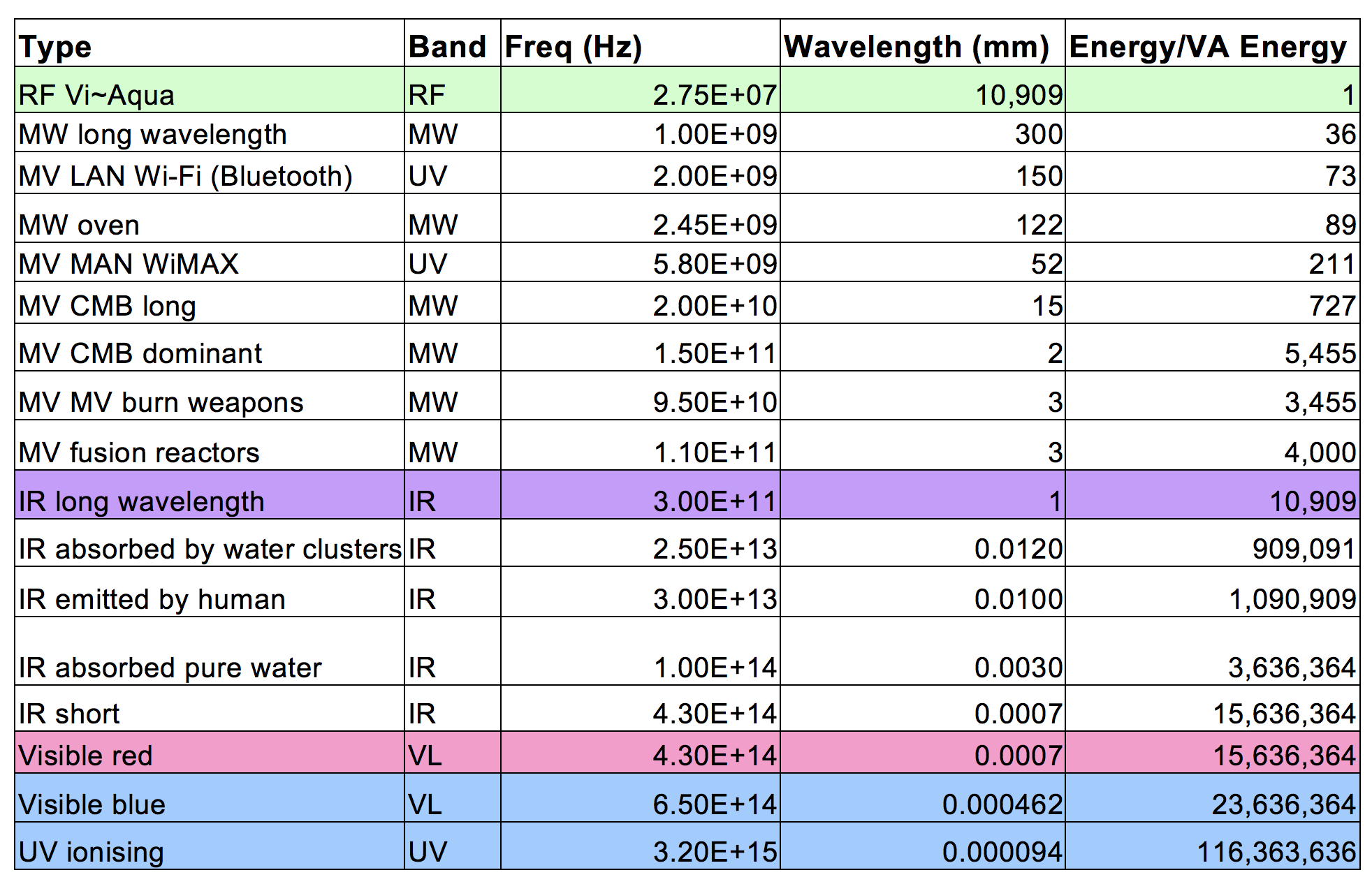
Table 16. Frequencies, wavelengths and energies for typical EM radiation. This illustrates typical energies of EM radiation in various bands, for comparison with the RF radiation in the experiment.
References
Chibowski, E., and Holysz, L., Colloids Surf. A 101, 99 (1995). “Effect of a radiofrequency electric field on the zeta potential of some oxides.”
Colic, M. and Morse, D., Journal of Colloid and Interface Science 200, 265–272 (1998). ARTICLE NO. CS975367. “Effects of Amplitude of the Radiofrequency Electromagnetic Radiation on Aqueous Suspensions and Solutions.”
Cosgrove, D.J. (1993). Int. J. Plant Sci. 154(1):10-21. “Water uptake by growing cells. An assessment of the controlling roles of water relaxation, solute uptake and hydraulic conductance.”
Darragh, A. (2009) The Facts of Light. p. 52-53. Booklink
De Ninno A., Del Giudice E., Gamberale L., Congiu Castellano A. (2014) Water Journal. Vol 6. “The Structure of Liquid Water Emerging from the Vibrational Spectroscopy: Interpretation with QED Theory.”
Elgimabi, M.N. and O.K. Ahmed, Botany Research International 2 (3): 164-168, (2009). “Effects of Bactericides and Sucrose-Pulsing on Vase Life of Rose Cut Flowers (Rosa hybirida)”.
Ellingsrud, S. and Johnsson, A. (1993). Bioelectromagnetics 14:275-271. “Perturbations; of plant leaflet rhythms caused by electromagnetic radiofrequency radiation.”
Ho, M-W. (2014). Water Journal. Vol 6. “Large Supramolecular Water Clusters Caught on Camera – A Review.” https://waterjournal.org/volume-6/ho
Higashitani1, K. and Oshitani, J., Journal of Colloid and Interface Science 204, 363–368 (1998) ARTICLE NO. CS985590 “Magnetic Effects on Thickness of Adsorbed Layer in Aqueous Solutions Evaluated Directly by Atomic Force Microscope.”
Leahy, J.J., Macken, C. and Ryan, M., Journal of Colloid and Interface Science 225, 209-213 (2000). “The Effects of Radiofrequency Electromagnetic Radiation on the Adhesion Behavior of Aqueous Suspensions.”
Lippincott, E.R., Stromberg, R.R., Grant, W.H. Cessac, G.L. (1969). “Polywater.” Science 164: 1482-1487.
Krizaj, D. and Valencic. V. (1989). J. Bioelectricity 8(2): 159-165. “The effect of ELF magnetic fields and temperature on differential plant growth.”
McQueen M. S. & Cosgrove, D.J. (1994). Proc. Natl. Acad Sci. USA. 91:6574-6578. “Disruption of hydrogen bonding between plant cell polymers by proteins that induce wall extension.”
Morse, D., et al., U.S. Patent 5,606,273 (1997).
O’Kiely, P and O’Riordan, E., “Qualitative and Quantitative effects of Vi-Aqua activated water on the germination and growth of Lolium Perenne”. (1998). Reproduced in Web Ref. 6, pp. 14-40.
Onsager, L., Phys.Rev. 37: 405 (1931).
Phitke, P. S., Kubde, A. B. and Umbarkar, S. P. (1996). Seed Sci. & Technol. 24:375-392. “The influence of magnetic fields on plant growth.”
Pollack, G. (2013) The Fourth Phase of Water. Ebner and Sons. Seattle.
Prigogine, I. And Stengers, I. (1984). Order Out of Chaos. William Heinmann Ltd. London.
Roy, R., Rao, M. L. and Kanzius, J. (2008). “Observations of polarised RF radiation catalysis of dissociation of H2O–NaCl solutions.” Materials Research Innovations. VOL 12 NO 1.
Web References
http://www.viaqua.com/how-it-works/
https://austindarragh.wordpress.com/viaqua-com-technology-description/
https://austindarragh.wordpress.com/2014/09/28/introducing-the-fourth-state-of-plasma-in-water/
http://www.viaqua.com/wp-content/uploads/2014/04/Askin-full-report.pdf
http://www.viaqua.com/wp-content/uploads/2014/04/Full-Scientific-Doc-Proof.pdf
http://www.chem1.com/CQ/gallery.html
http://www.chem1.com/CQ/aquacrack.html#VIAQ
http://sciencefocus.com/forum/water-energising-technology-t702.html
http://www.pepijnvanerp.nl/2013/09/vi-aqua-turning-water-into-snake-oil/
http://www.rexresearch.com/darraghviaqua/darragh.htm
http://patft.uspto.gov/netacgi/nph-Parser?Sect2=PTO1&Sect2=HITOFF&p=1&u=%2Fnetahtml%2FPTO%2Fsearch-bool.html&r=1&f=G&l=50&d=PALL&RefSrch=yes&Query=PN%2F6974561 (Thomason patent 2001/2005 6,974,561).
http://patft.uspto.gov/netacgi/nph-Parser?Sect1=PTO2&Sect2=HITOFF&p=1&u=%2Fnetahtml%2FPTO%2Fsearch-bool.html&r=24&f=G&l=50&co1=AND&d=PTXT&s1=6,974,561&OS=6,974,561&RS=6,974,561 (Alternative patent 2001/20077,291,314).
http://identifythatplant.com/dandelion-and-cats-ear/
http://www.viaqua.com/testimonials/
Footnotes
1. Thanks go to two referees for WATER journal who made valuable suggestions. Thanks go to Vera Scott for discussions suggesting this experiment. Thanks to Peter and Monica Rudolf and Bev and Gary Thompson for support and accommodation during various trials.
2. See Web Refs 14, 15, 16 for other patents. The Morse patent (2007) claims that: “An apparatus subjects water to waves from an RF plasma. This allows continuous production of ‘activated water’ characterized by cluster sizes below about 4 molecules per cluster, water having pH below 4 or above 10, or water having ORP of less than -350 mV or more than +800 mV. The basic frequency of the plasma is preferably between 0.44 MHz and 40.68 MHz, and the plasma is preferably modulated at a frequency between 10 kHz and 34 kHz. Flow rates typically range from 20 l/hr to about 2000 l/hr. Activated water can be used for many purposes …”
3. E.g. Morse 1997, Colic and Morse 1998, Leahy 2000, Darraugh 2013.
4. Lower tells us in a broad generalization covering numerous unrelated products: “In these cases [specifically including ViAqua] there is no reason, based on present scientific knowledge, to believe that they even can work… the way they claim to work is not supported by or consistent with the known laws of chemistry and physics.” (Web Ref 13).
In (Web Ref 9):
“As usual, no credible supporting evi-dence is offered for the benefits of this ‘proven’ device, said to have been developed in Ireland by two Limerick University professors, but more likely by a troupe of leprechauns. For more of this malarky, see this ‘news’ article ‘Wave goodbuy to global warming, GM, and pesticides.’ (Web Ref 13).
5. The experiment was prompted by a discussion with Vera Scott, of Scott Biotechnology Ltd, North Canterbury, NZ, who observed that Vi~Aqua helps revive wilted flowers, notably English bluebells. Bluebells were not available for the experiment. The Vi~Aqua web-site claims that Vi~Aqua “increases the life of cut flowers.” For a reference to flower wilting science, see (Elgimabi and O.K. Ahmed 2009). The choice of catsear was important to the success of the experiment. Catsear is similar to the “true dandelion” (Taraxacum officinale), but has longer straighter wiry stems, ideal to monitor for wilting, and grows in large numbers in pasture. Catsears have more wiry stems than true dandelions, as well as branching stems, hairy leaves, and grow much more prolifically. Catsears are often referred to as false dandelions, and often confused with dandelions. See Web Ref 17 to distinguish the two species.
6. The rain water and bore water are good quality drinking water, clear of significant impurities. The grit is a fine whitish sandy earth found on the farm, used to fill holes in the farm roads. The exact composition is yet to be determined. Mixed with water it initially generates a soapy looking froth, which disappears with settling. The settled water loses all appearance of cloudiness, and a majority of the grit settles no the bottom after about 4 hours. The BORE + GRIT water was tested in a larger concentrations (200 ml per bucket). This slowed revival so severely it was not used.
7. These appear unrelated to the pheno-menon, and were controlled as follows. Air temperature was 16-28 C, water temperature 18-26 C, weather was fine and warm, experiments were at least 1 day after rain, in ambient light on a porch or room with large windows.
8. Colic and Morse (1997) claim that micro-bubbles are the receptor for EM effects: “In this work, we present evidence that the primary ‘‘receptor’’ of the electromagnetic radiation is a gas / liquid interface. Gas can be either already present in water or produced by the effects of electromagnetic fields. Perturbed gas / liquid interfaces re-quire hours to equilibrate. Certain RF and magnetic signals also produce reactive oxygen and hydrogen species (superoxide, hydrogen peroxide, hydro-gen, atomic hydrogen). The perturbed gas/liquid interface modifies the hydro-gen bonding networks in water and also the hydration of ions and interfaces. Careful outgassing removes all of the effects of the electromagnetic fields, including the magnetic memory effect.”
They claim the RF treatment depends upon the presence of micro-bubbles.
“[Colic and Morse] realized that out-gassing the water after EMF treatment completely removed any effects of the treatment. When working with RF and microwave fields, it was also concluded that preliminary outgassing of water prevented the EMF effects on the behavior of suspensions and solutions. Detailed studies of the gas/liquid interface (18) revealed that it is the primary target of the EMF action and the memory effect. Gas/liquid interfaces seem to relax much more slowly than pure water when perturbed.” (Colic and Morse, 1997, p. 266).
